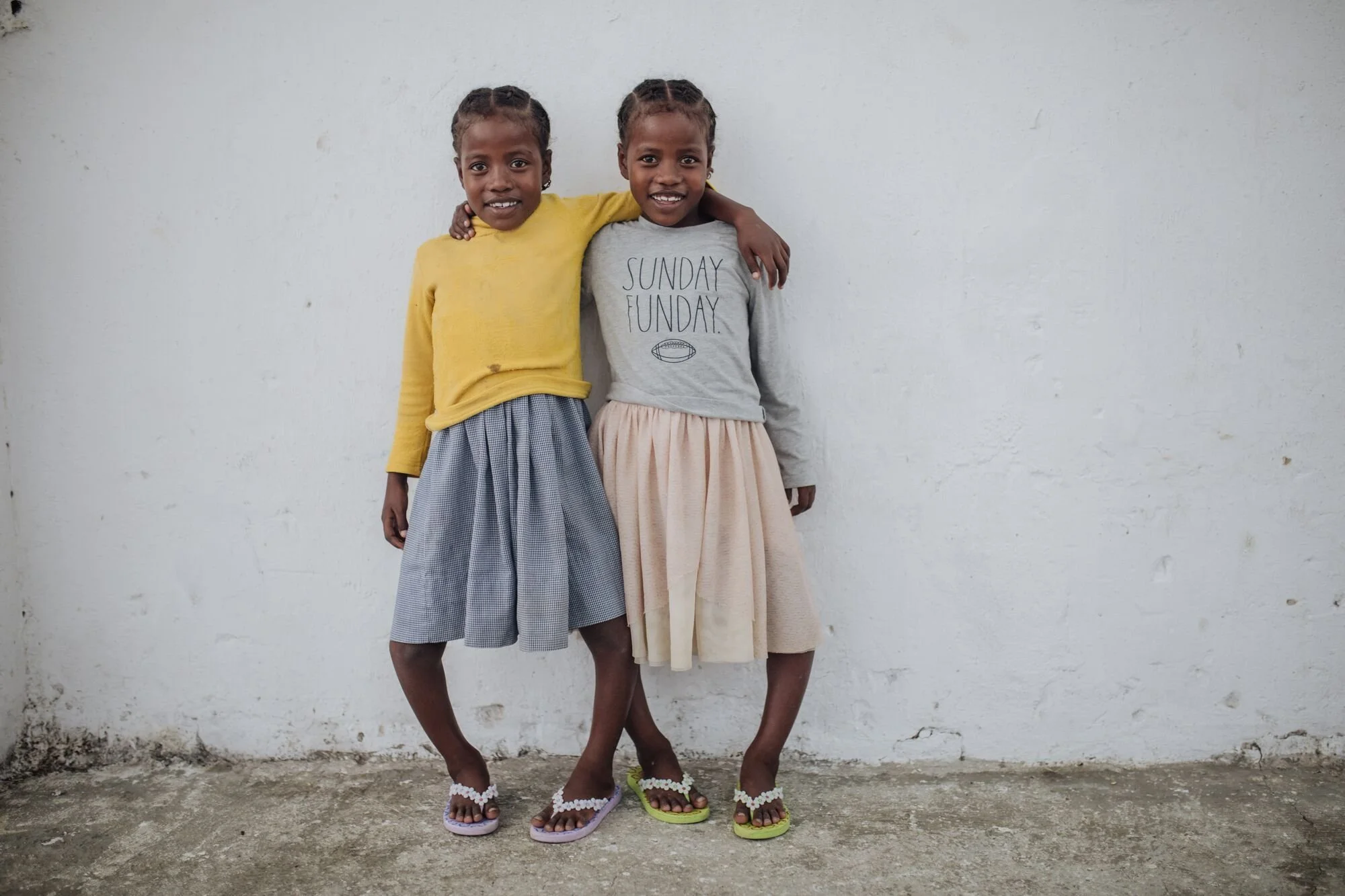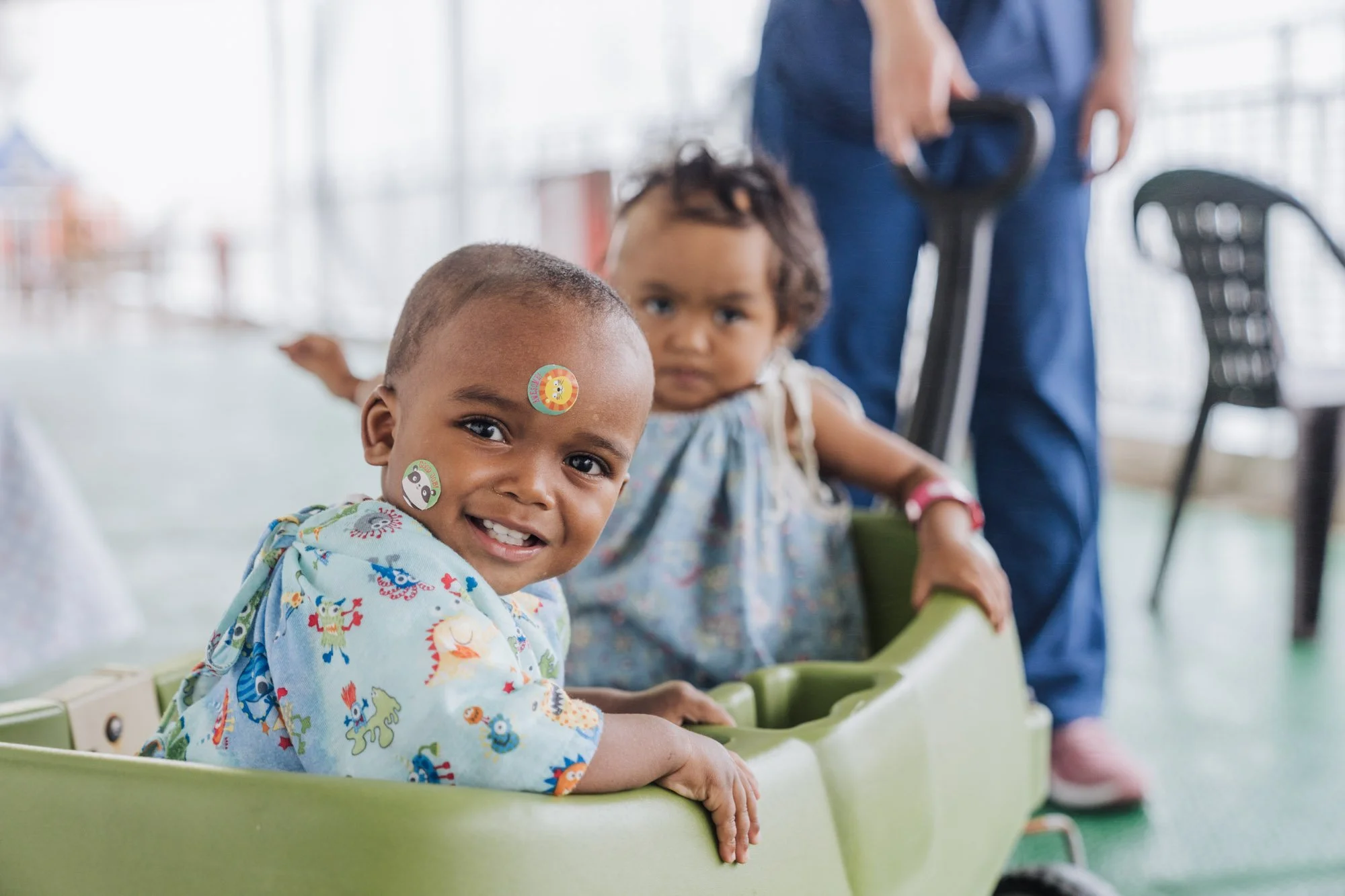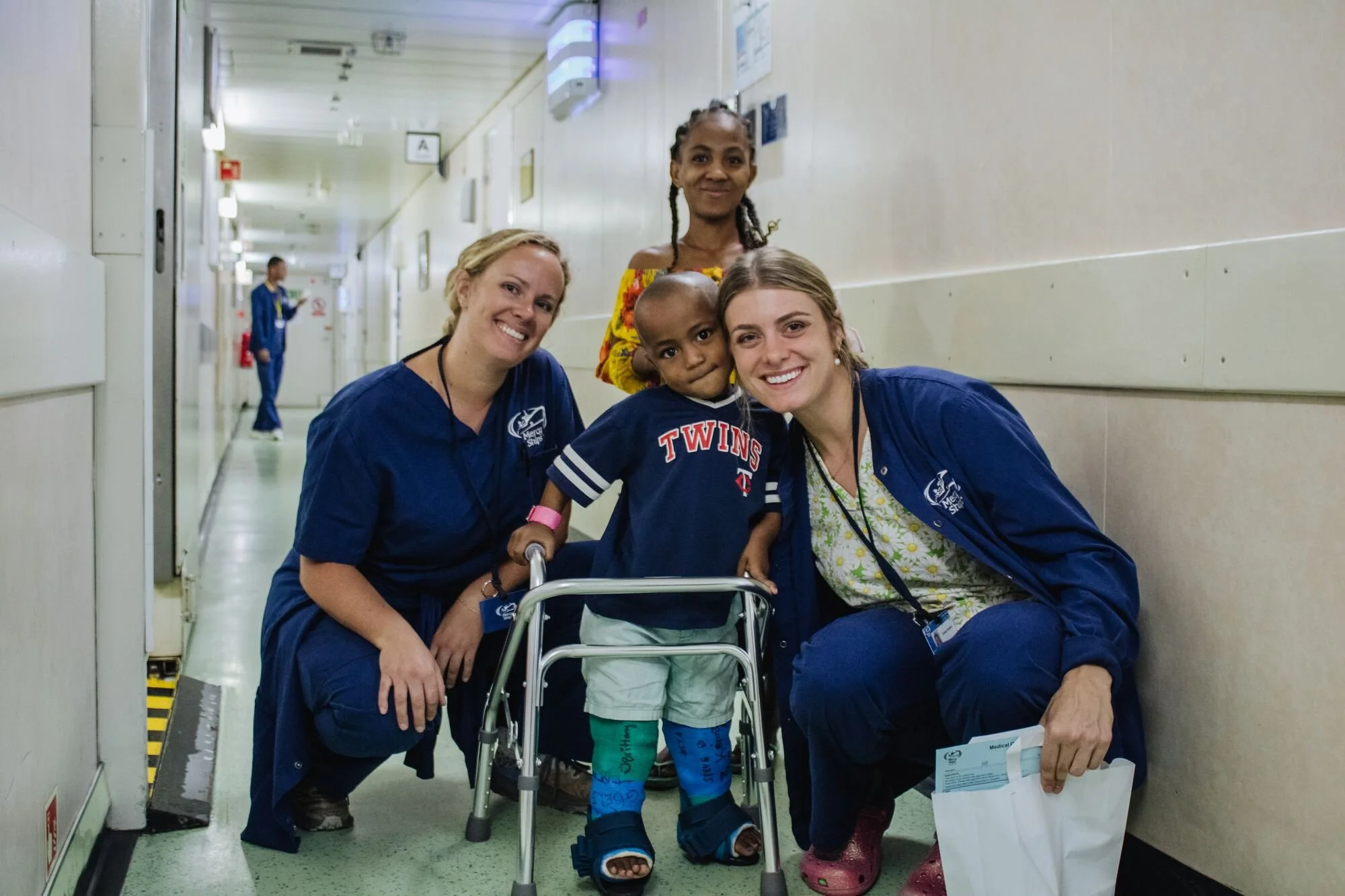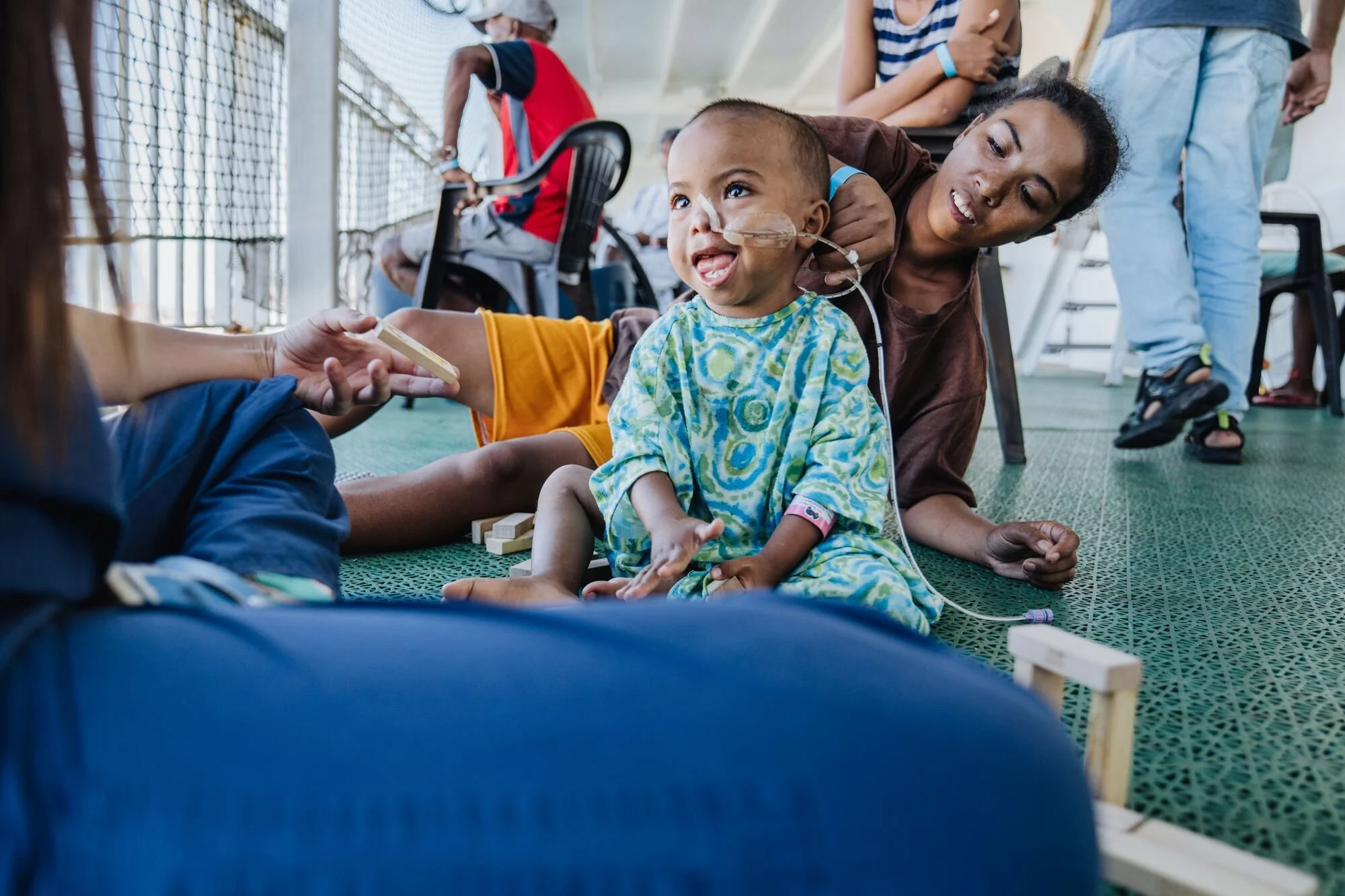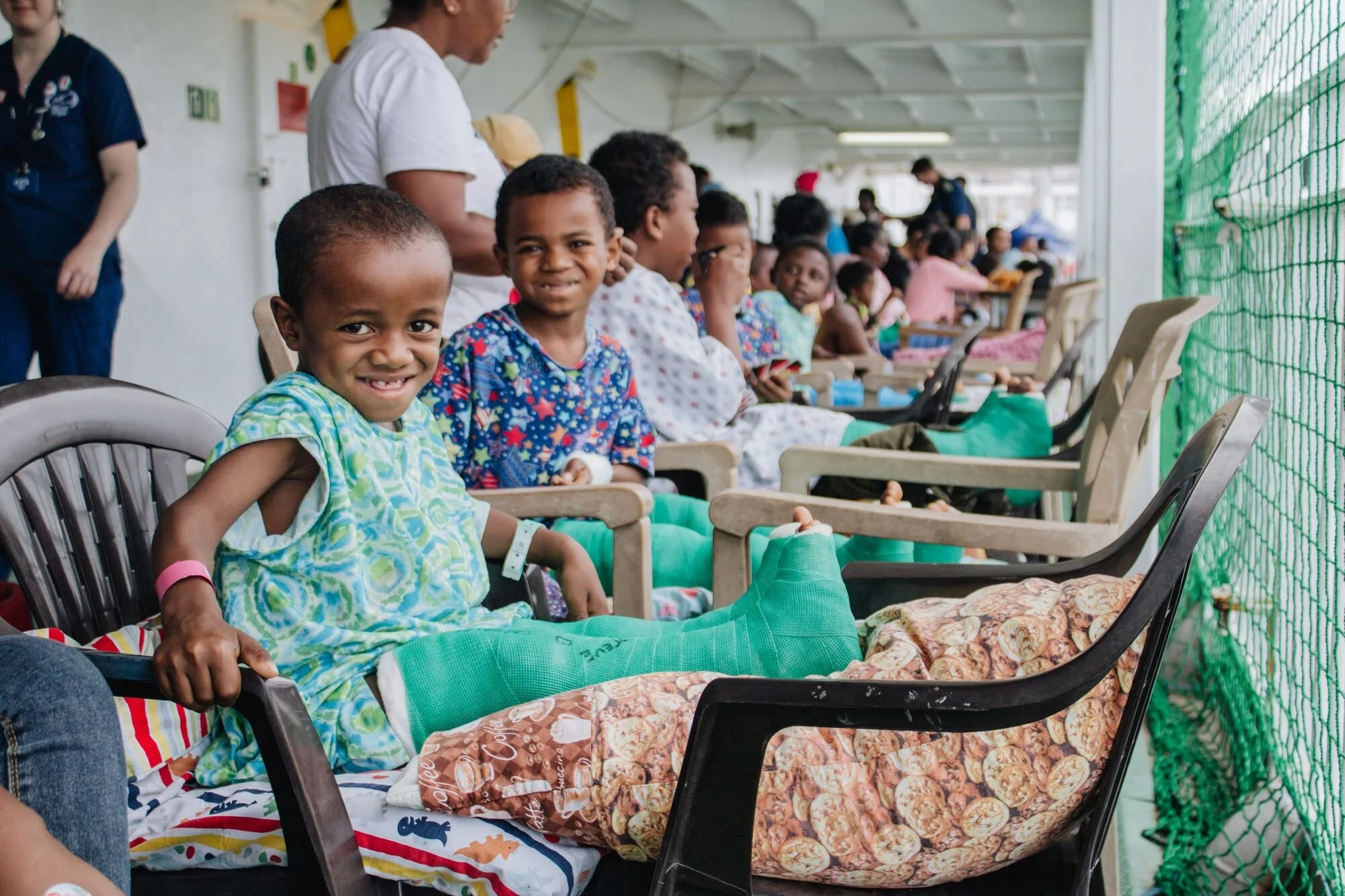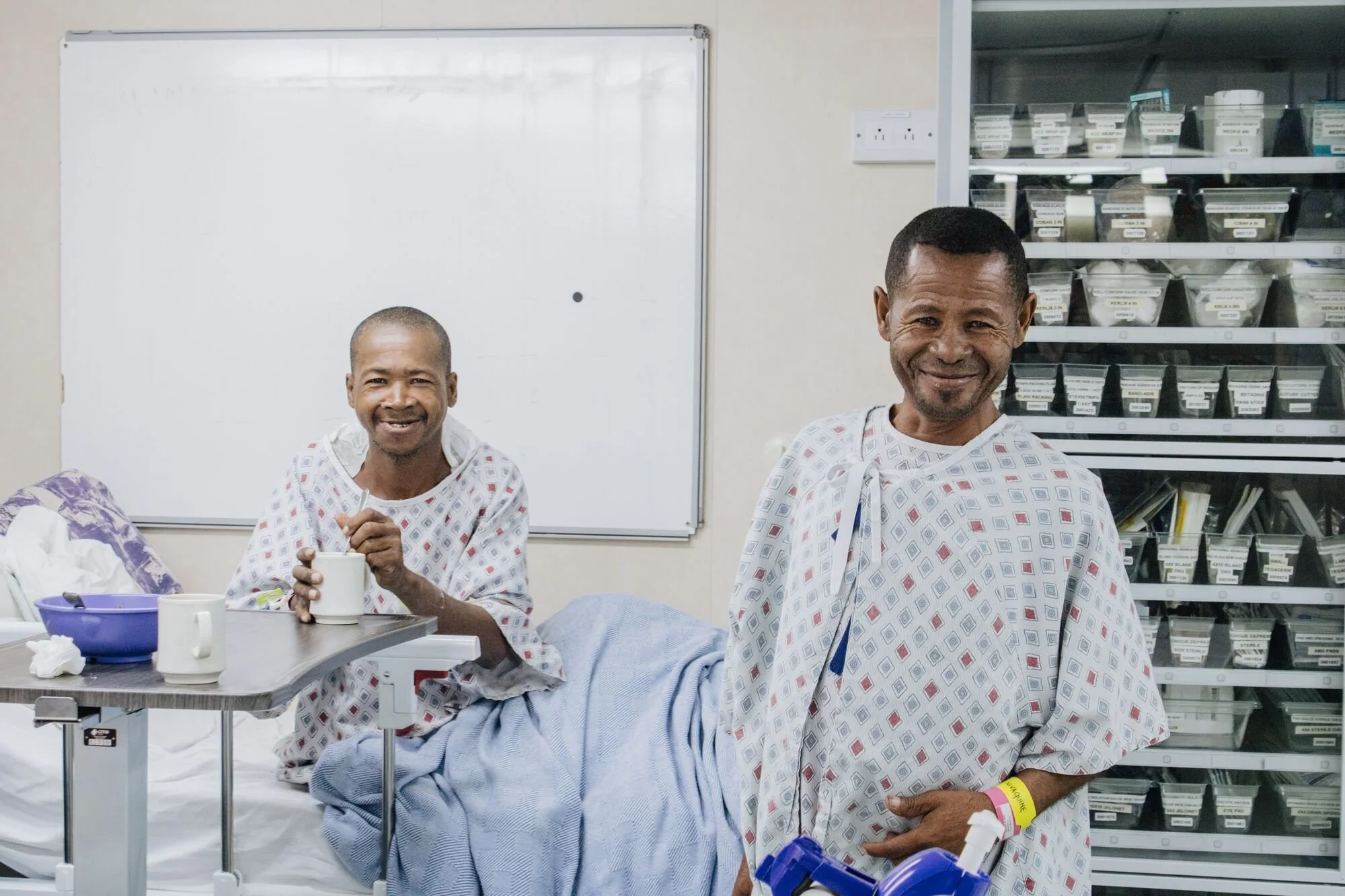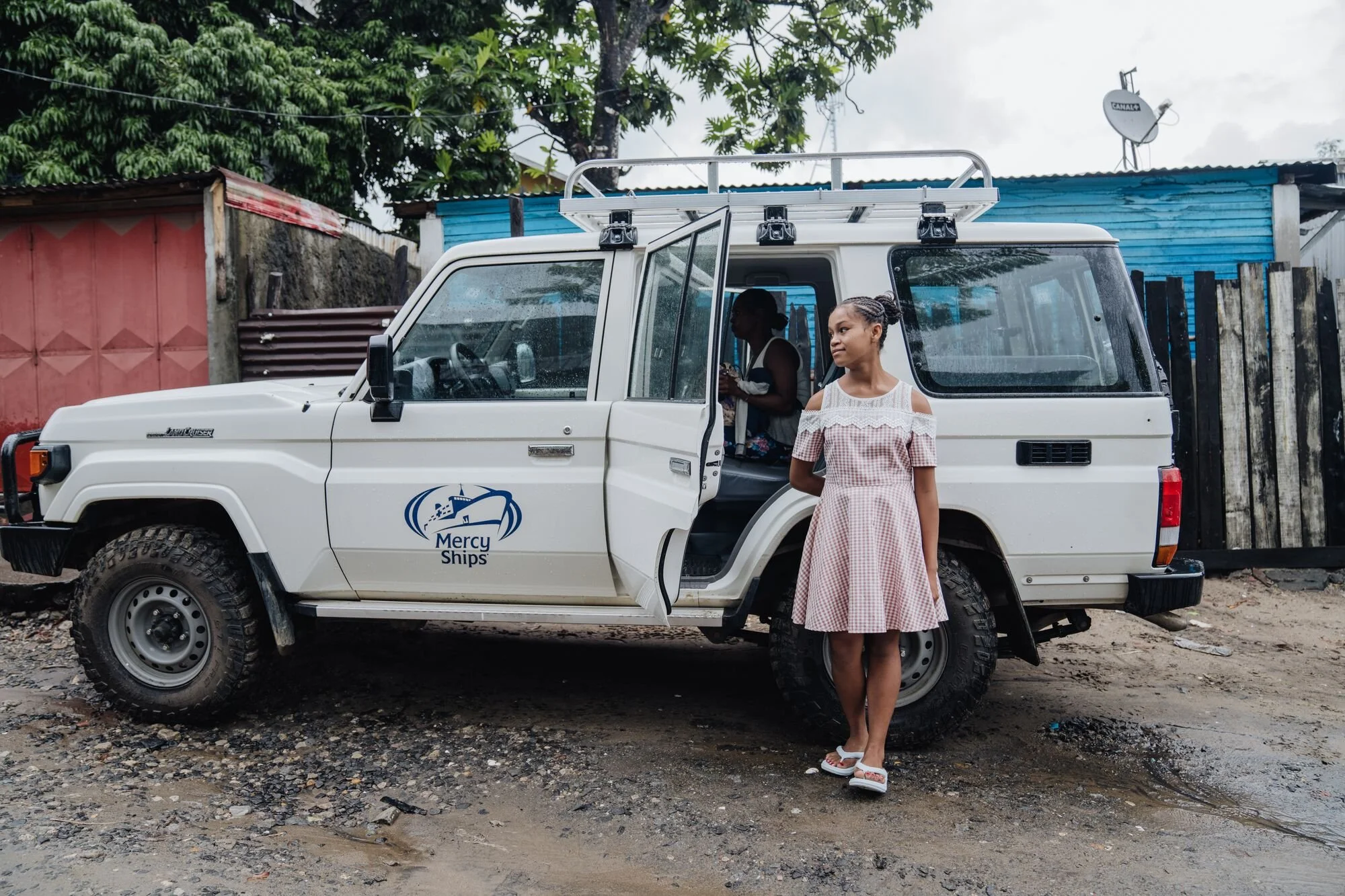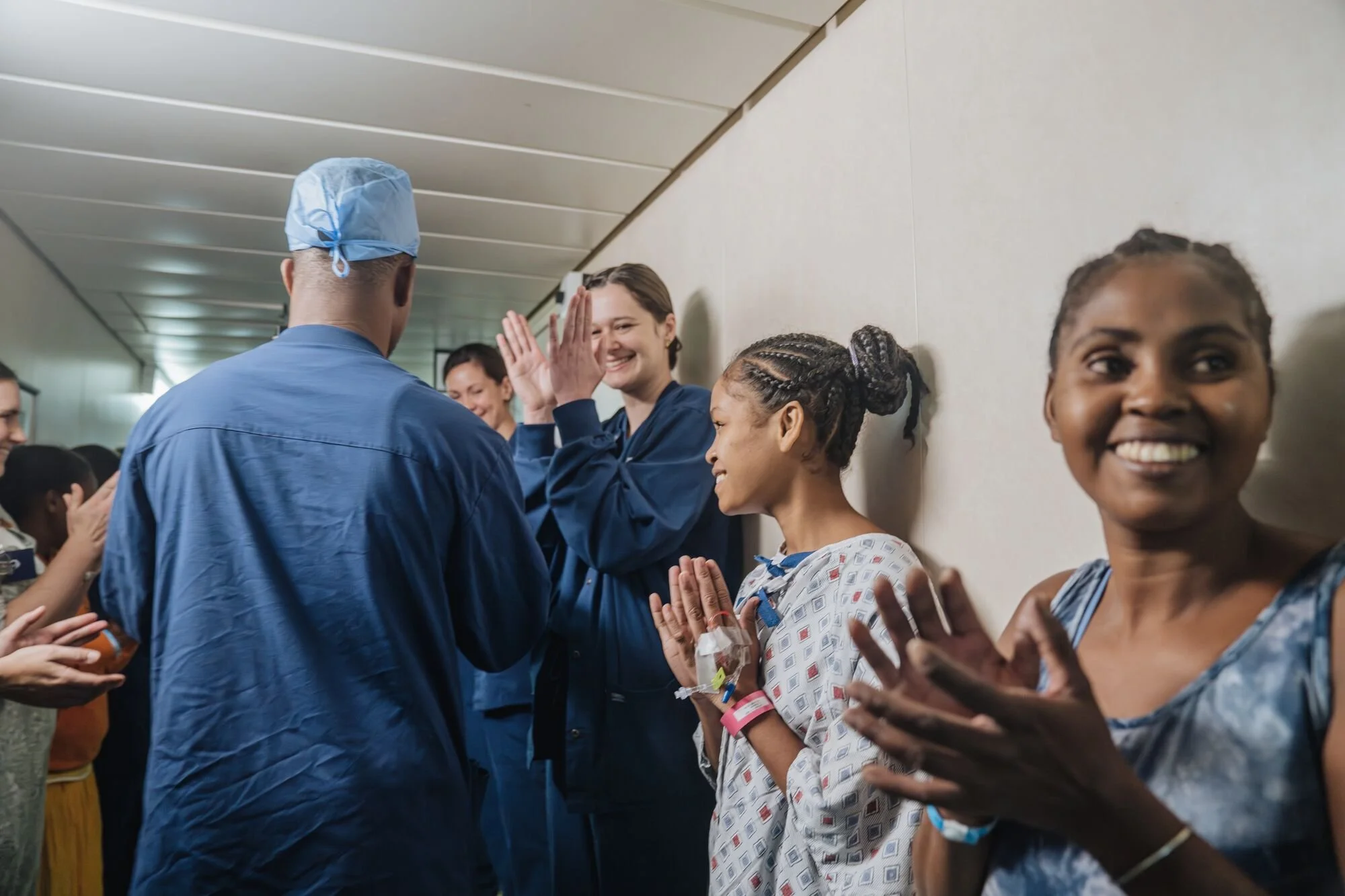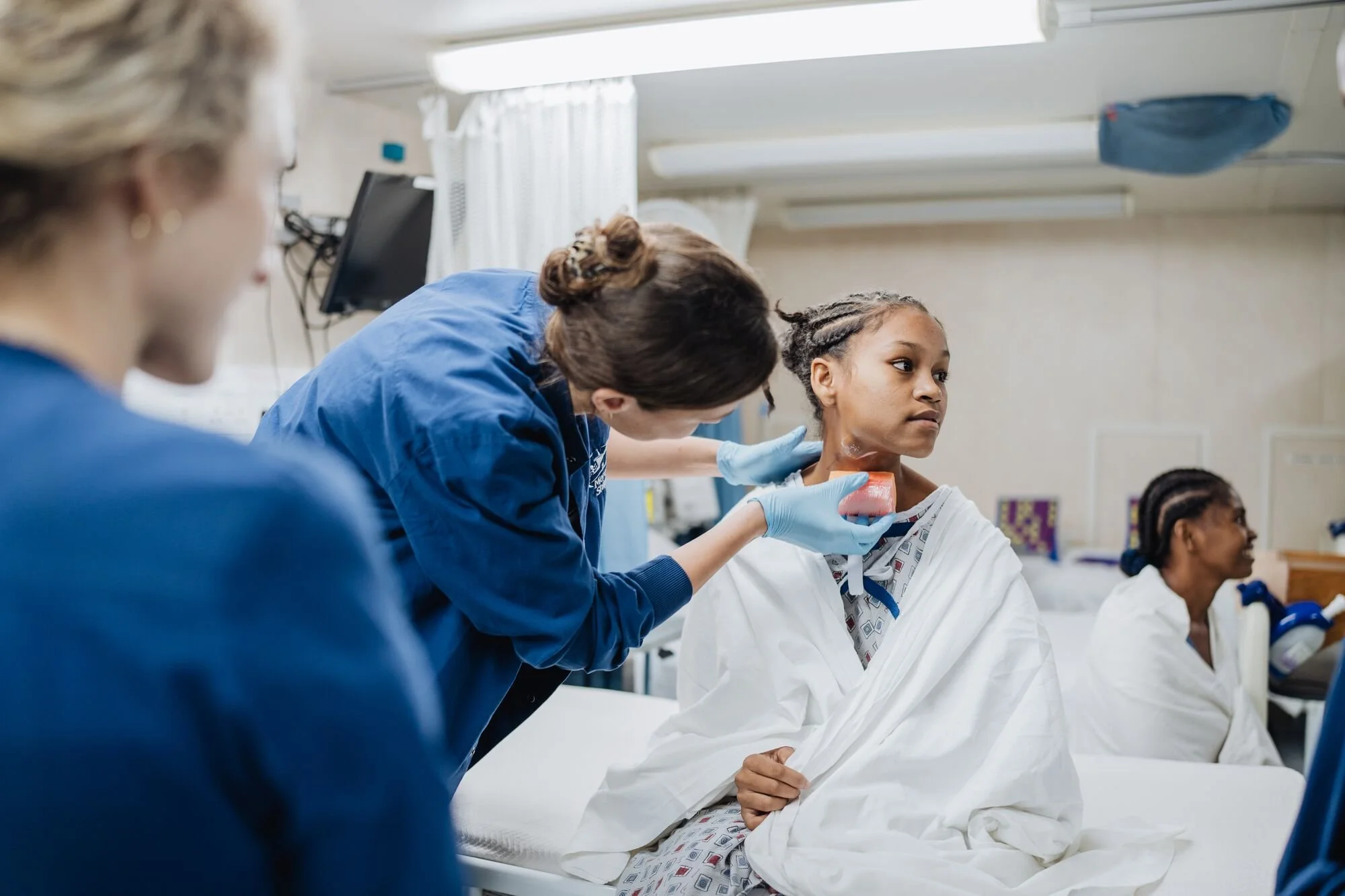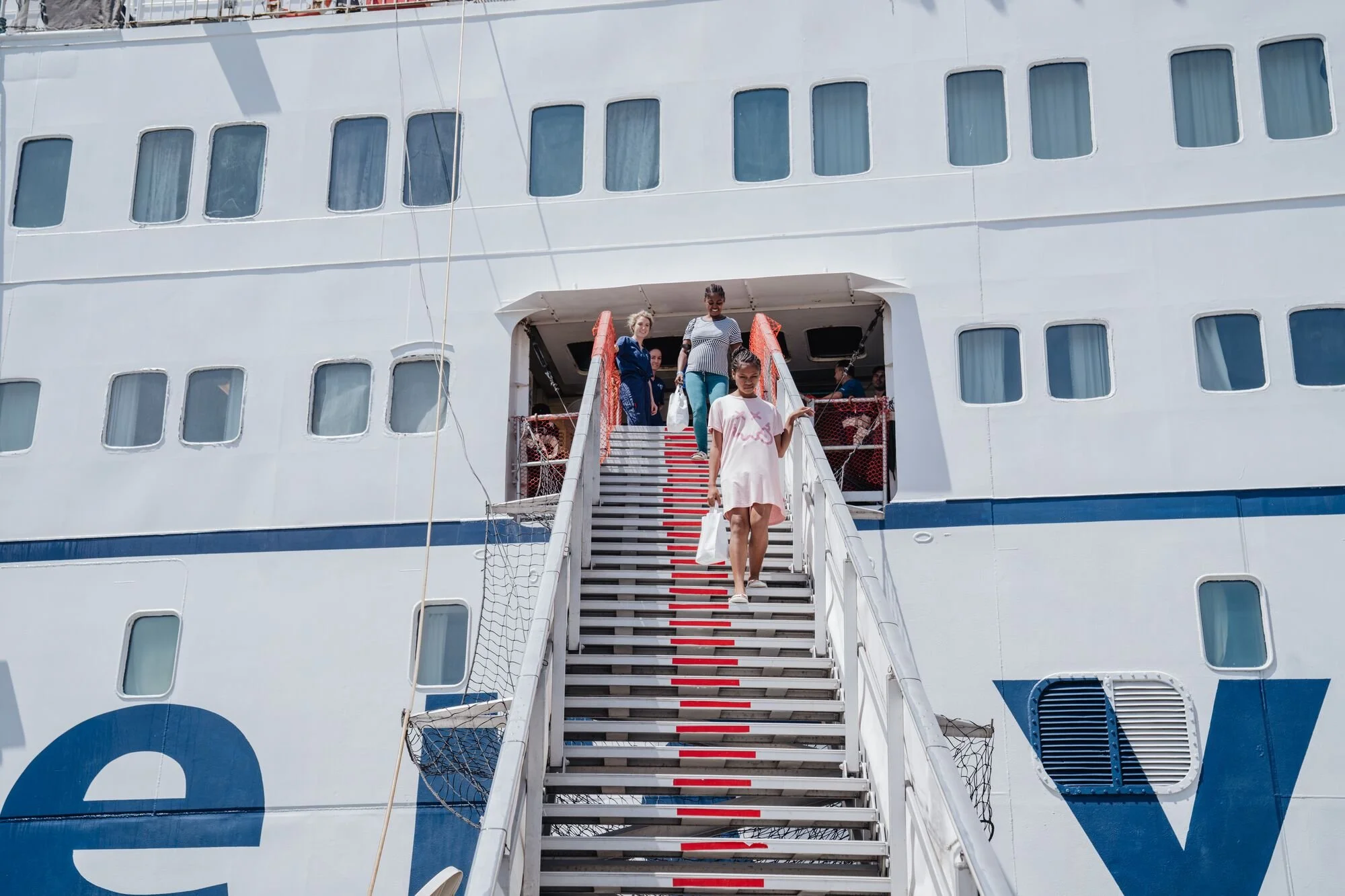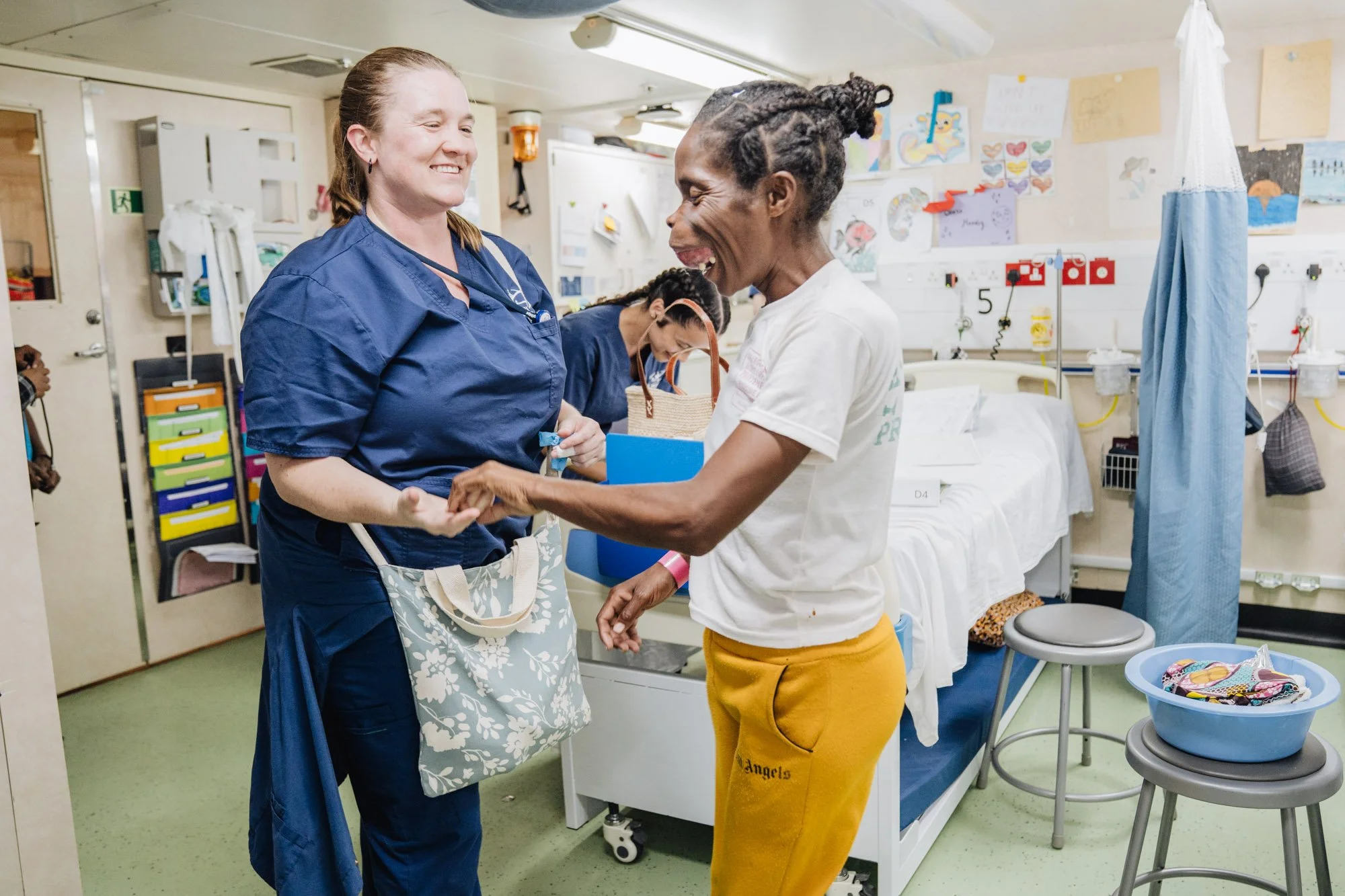The Floating Hospital…
Mercy Ships - Madagascar
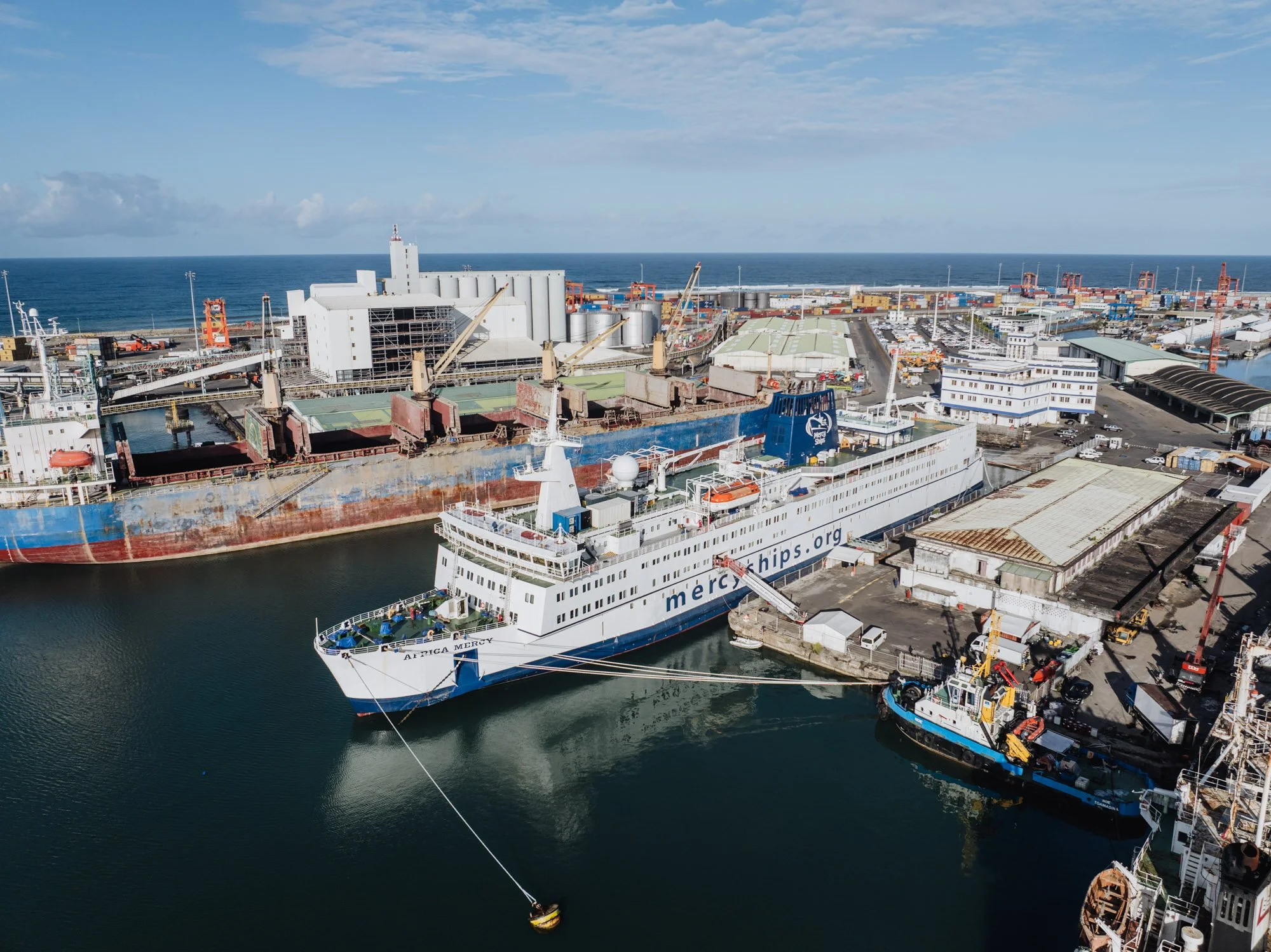
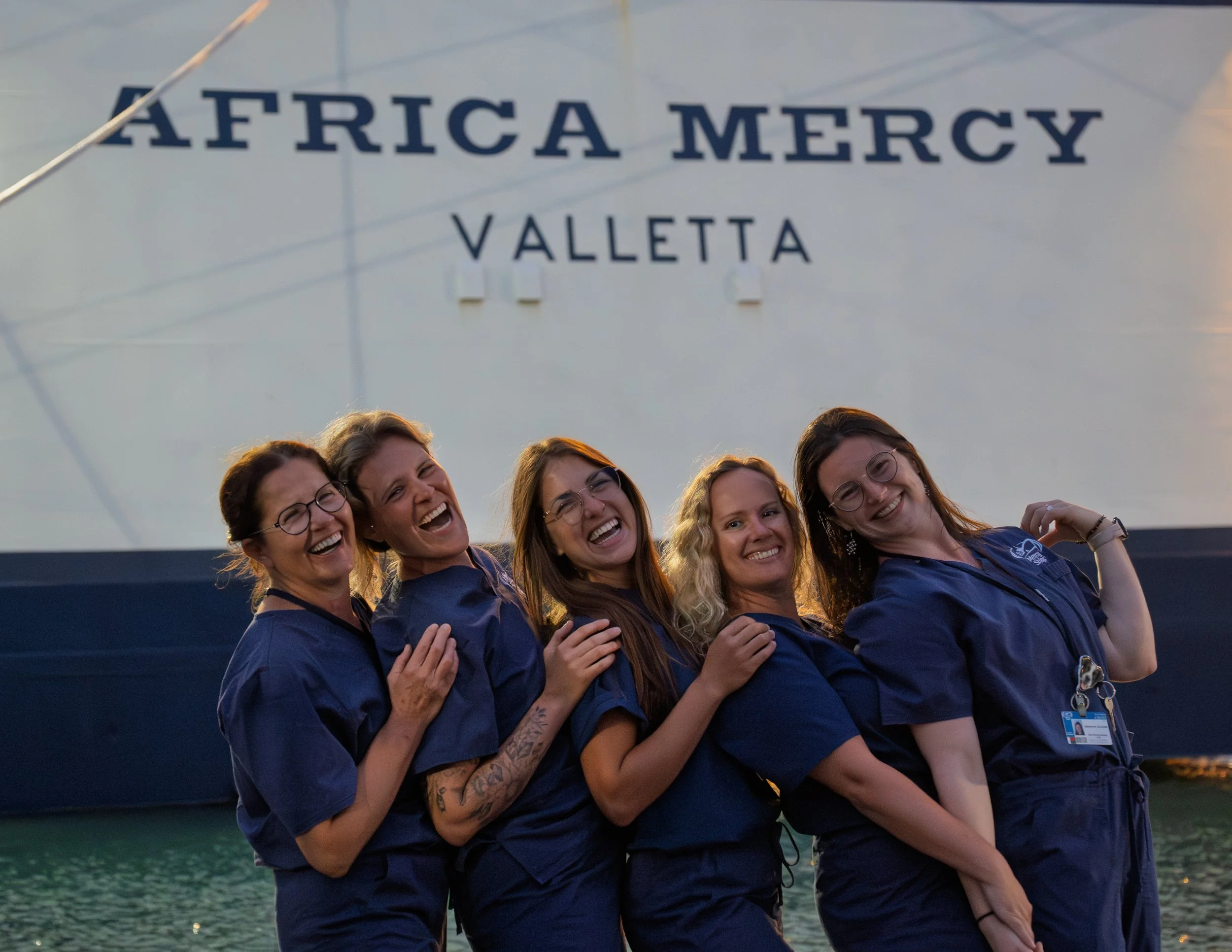
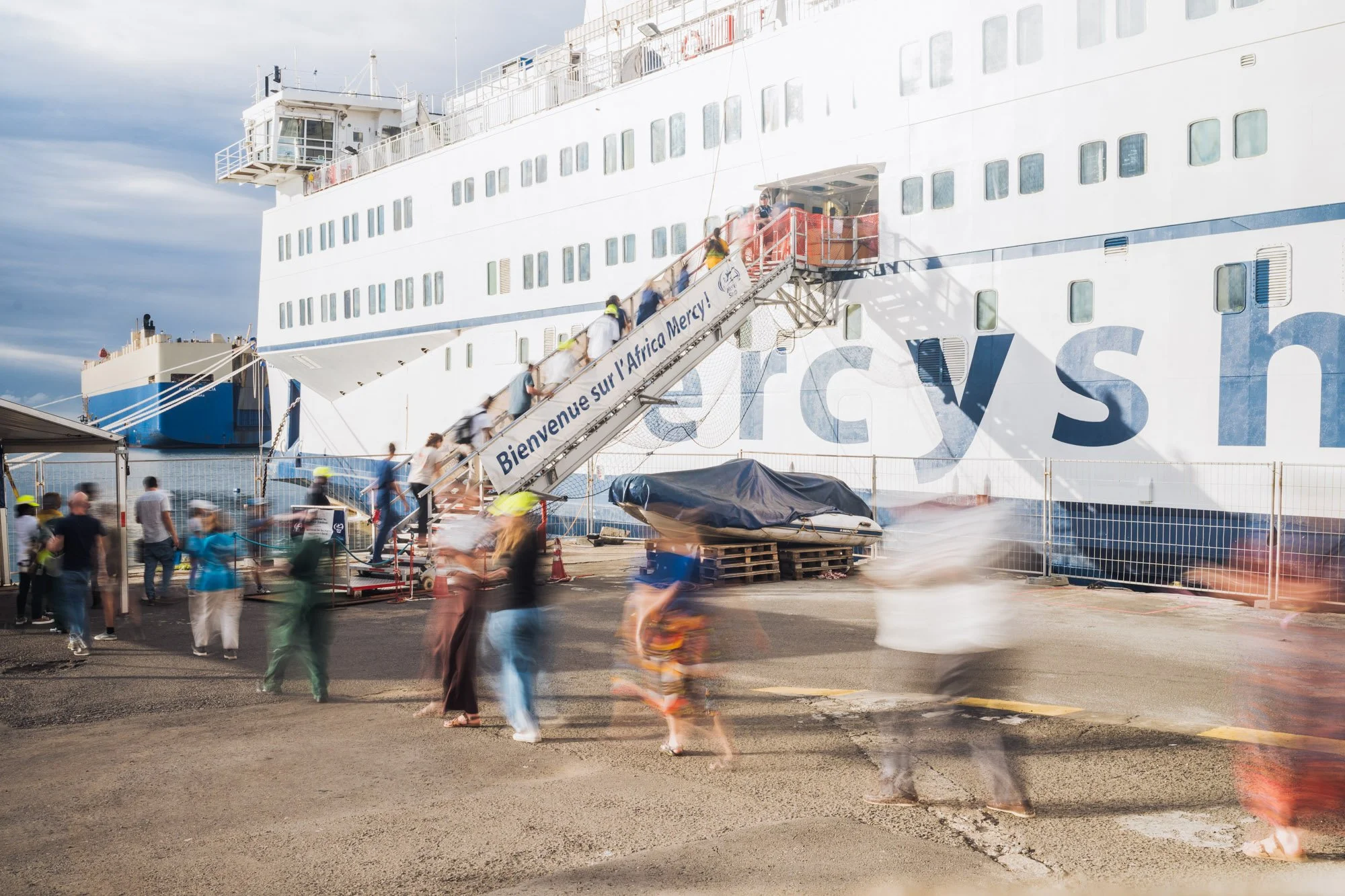
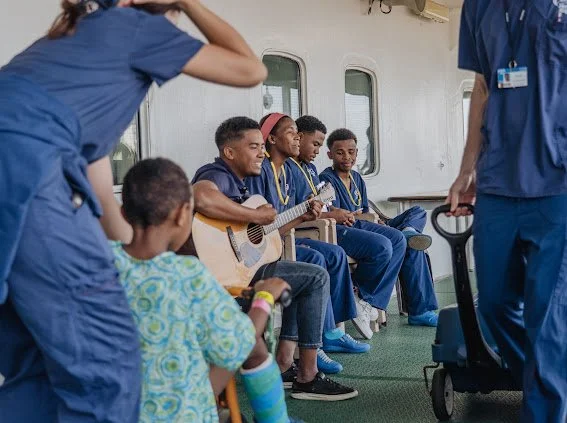
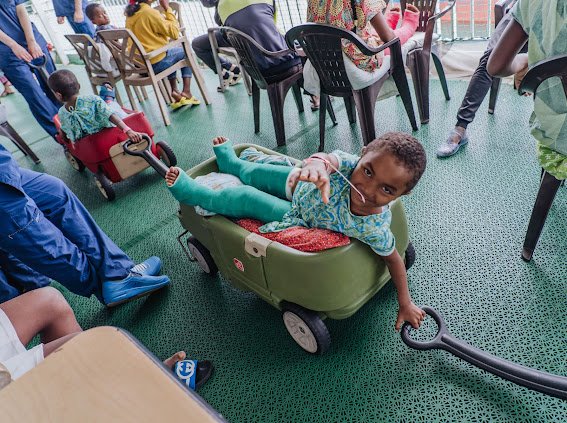
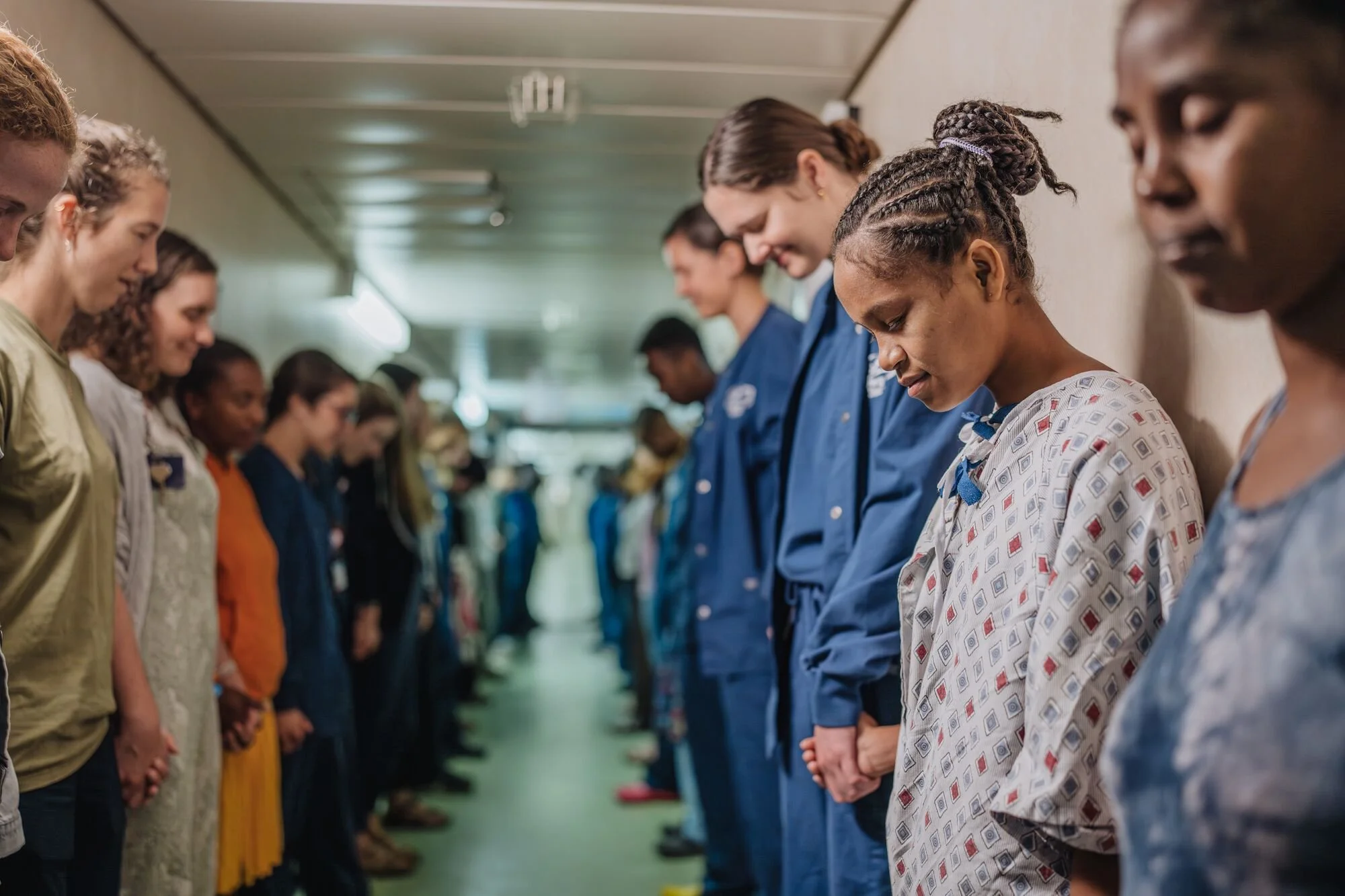
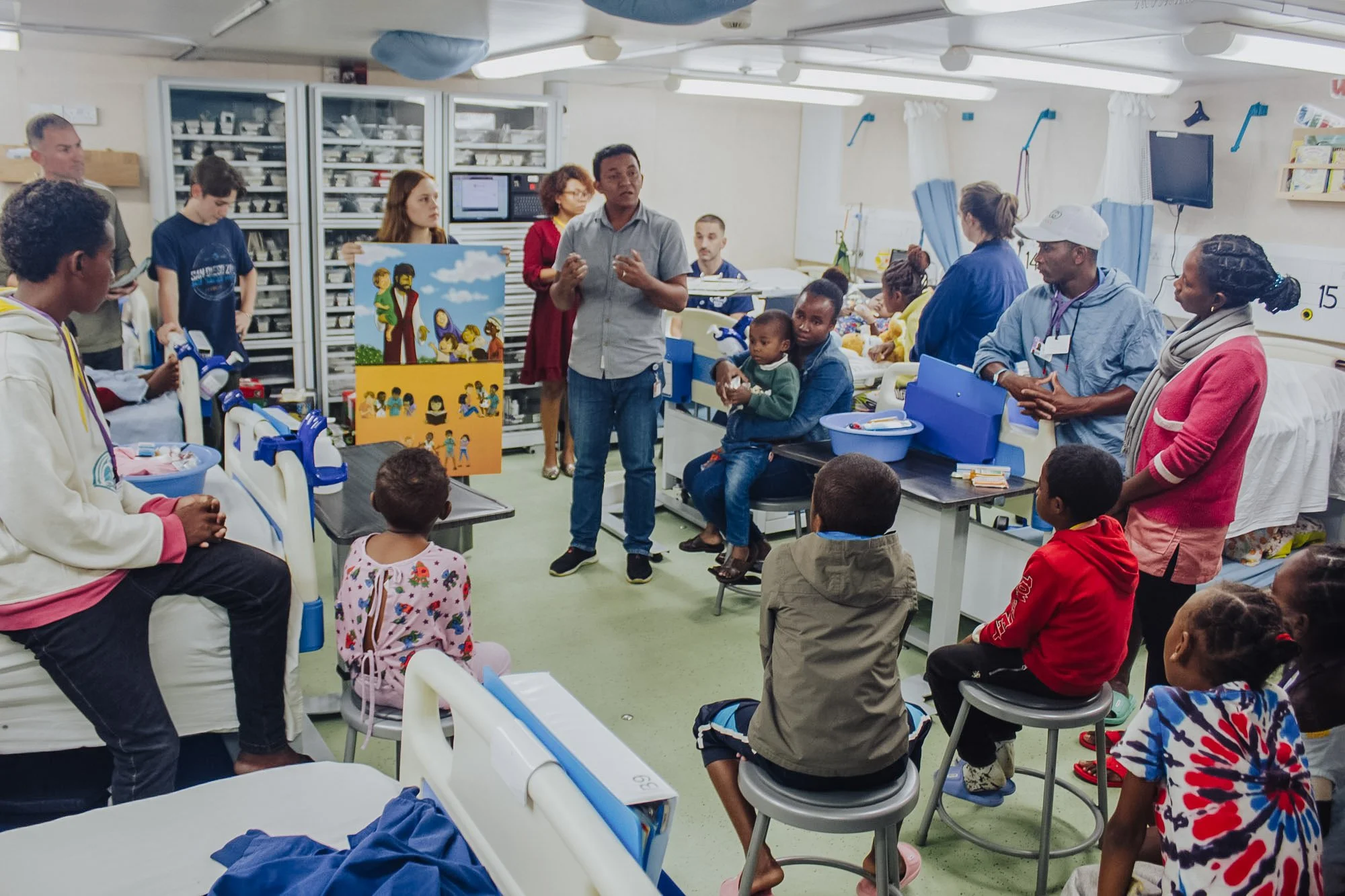
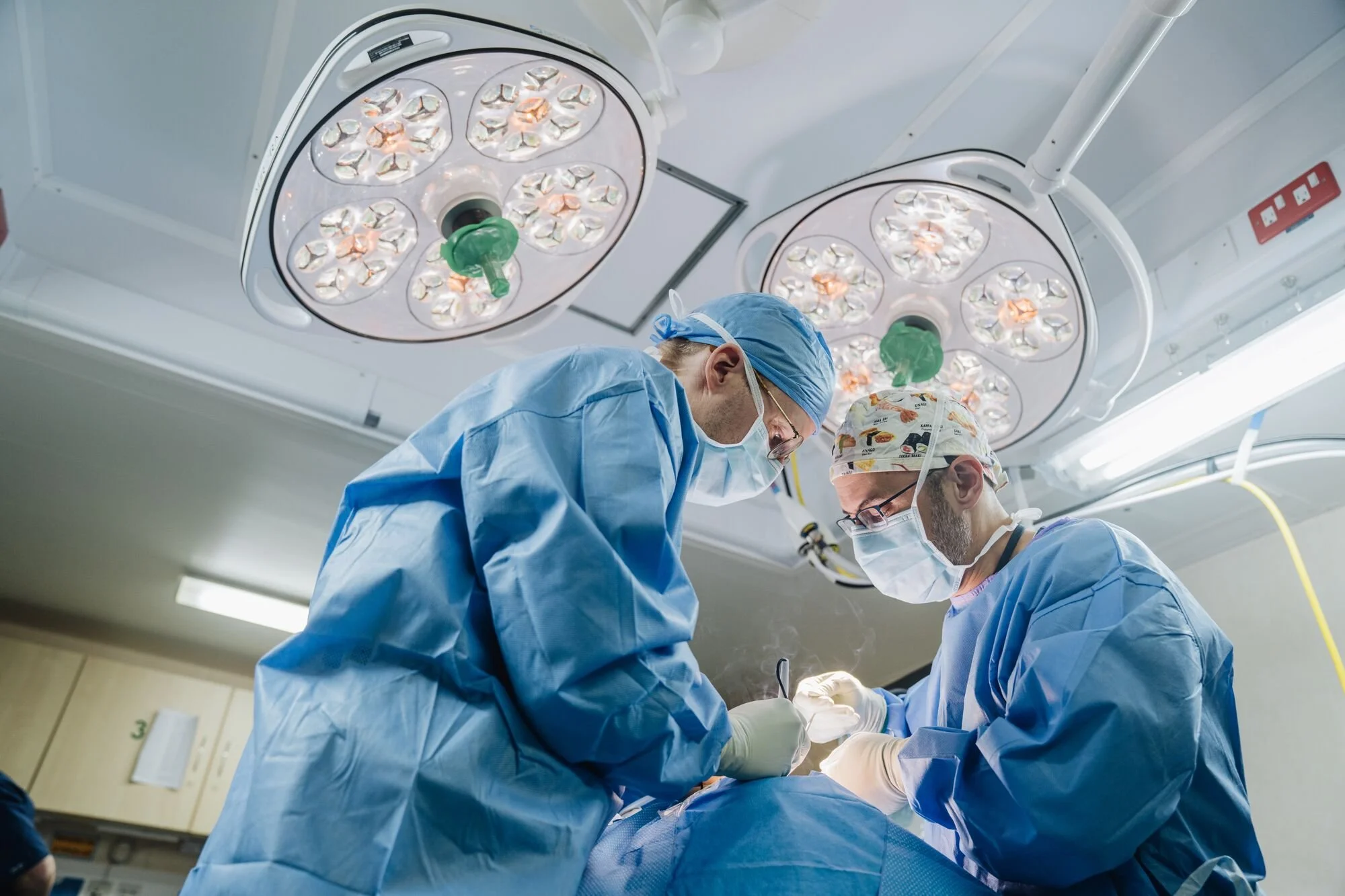
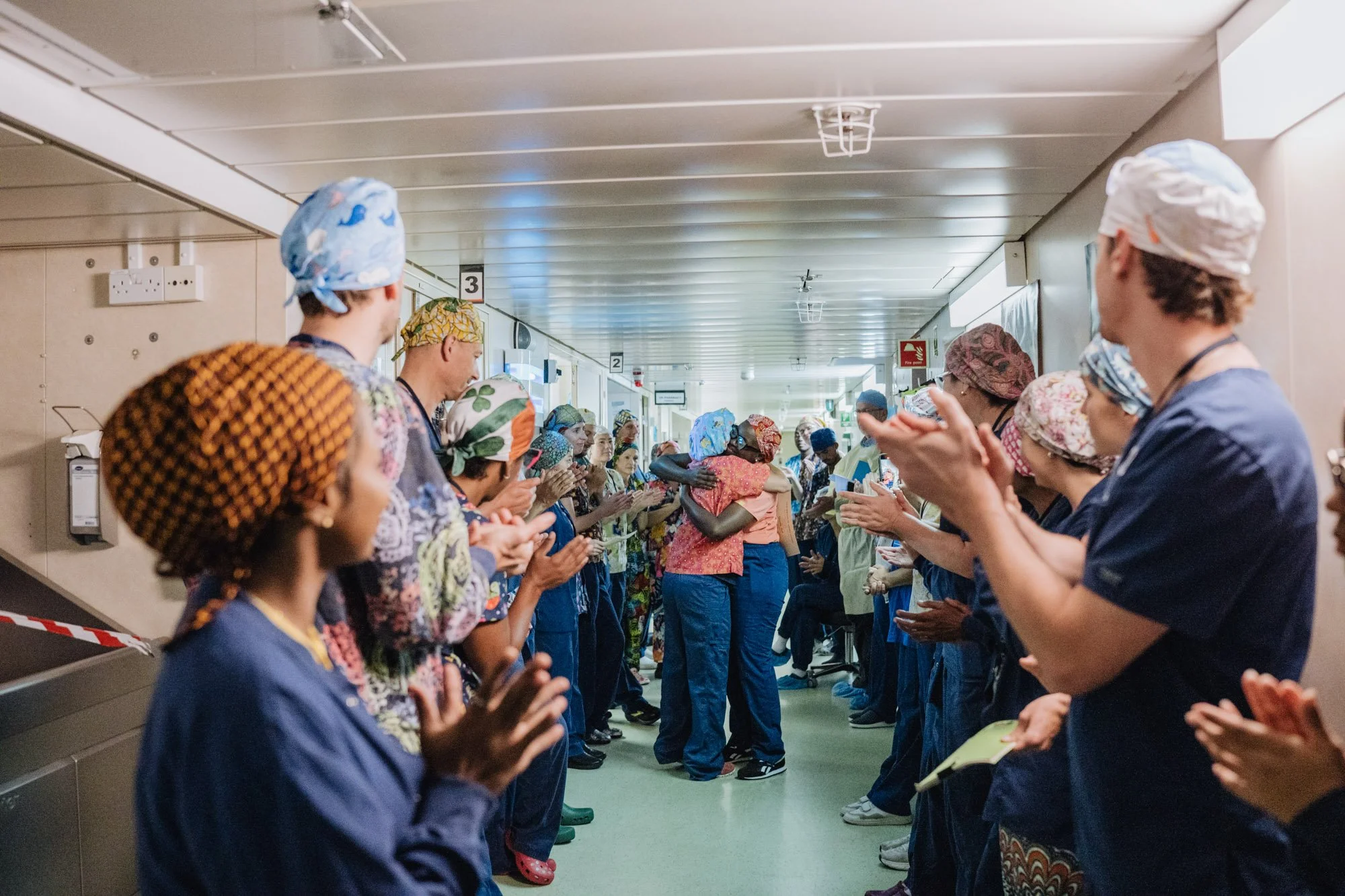
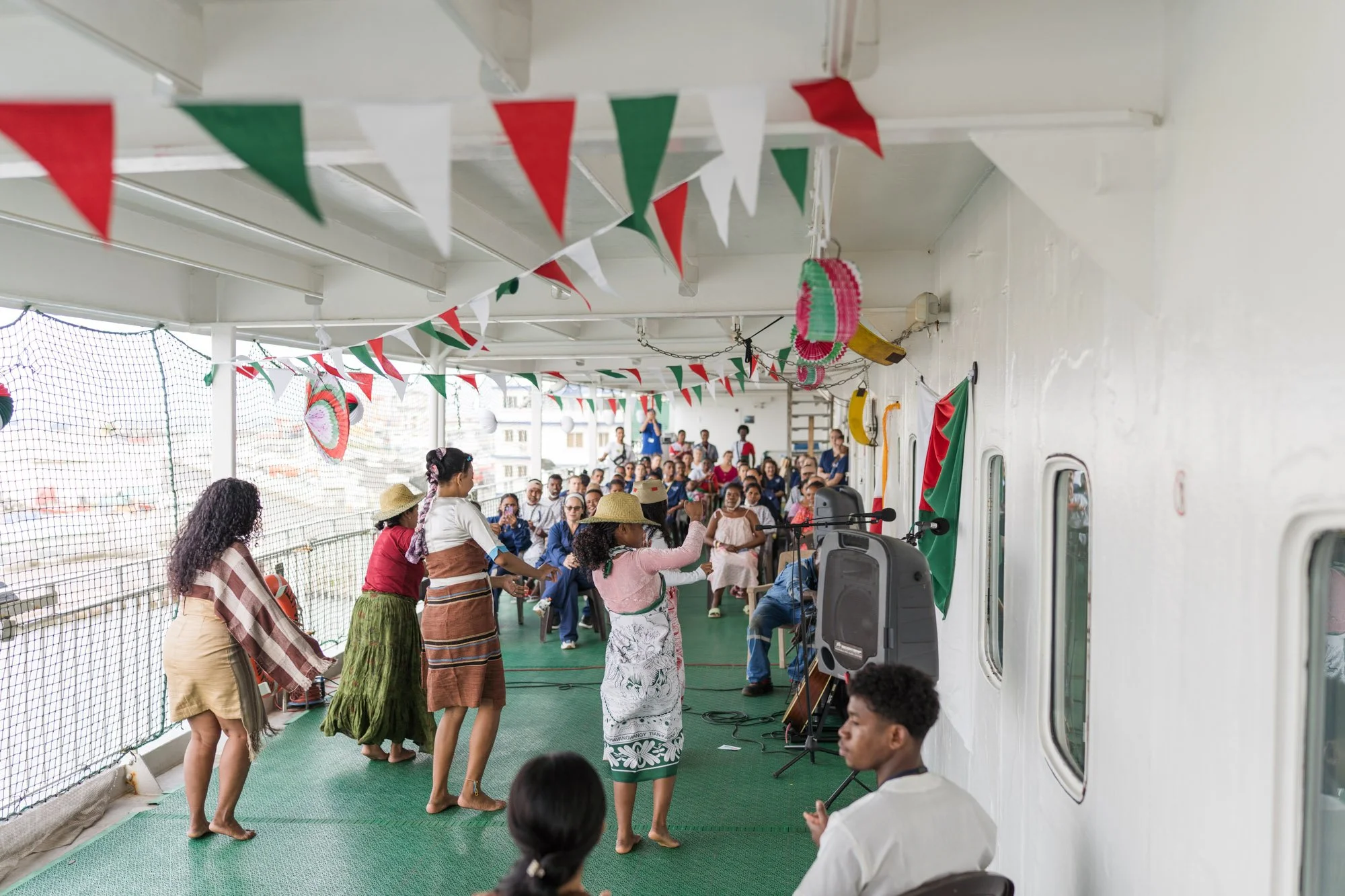
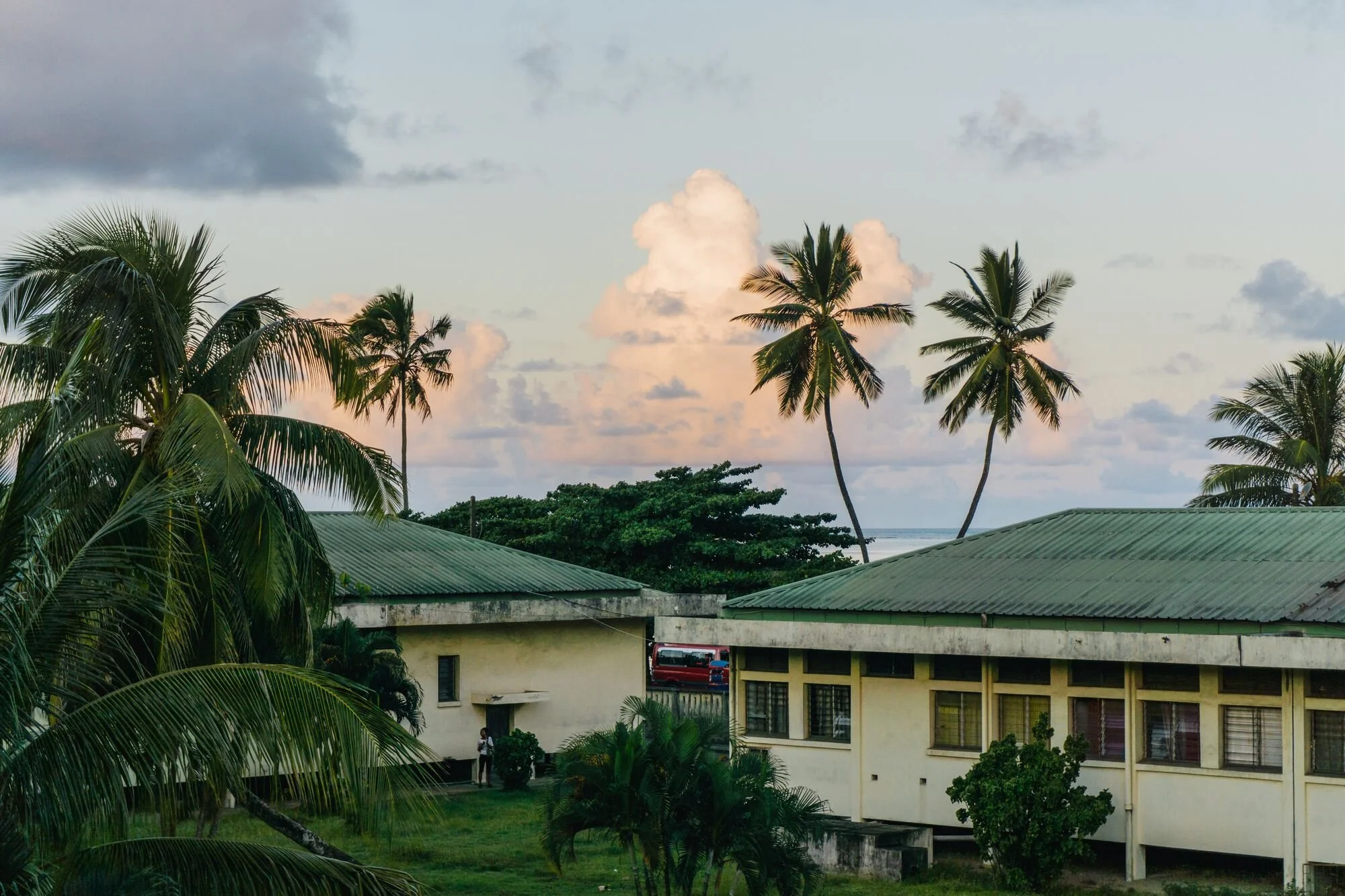
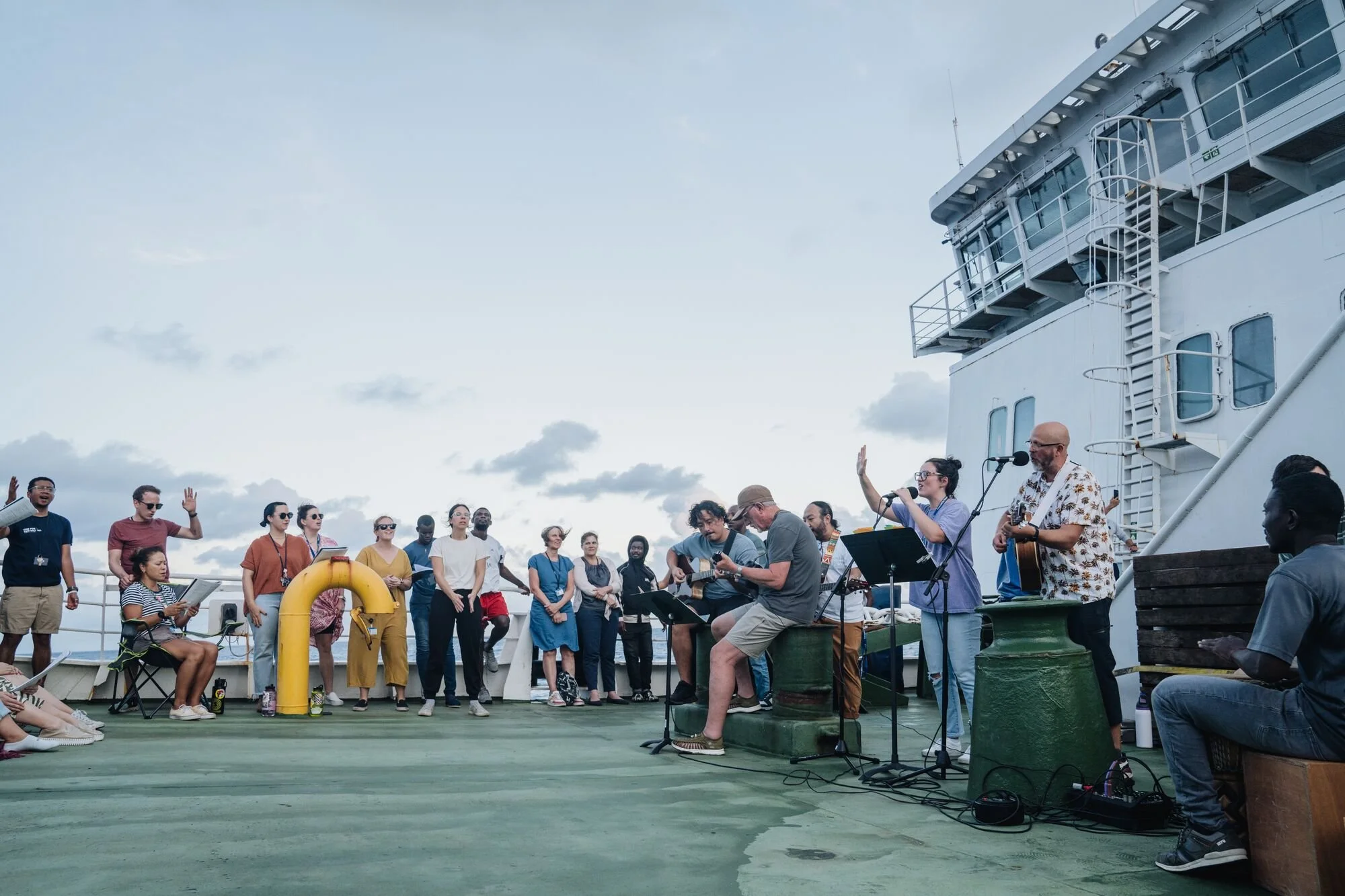
HOPE Center
The HOPE Center is a special place, our patients’ journeys usually begin and end here. HOPE Center stands for: Hospital Out-Patient Extension Center and Mercy Ships refurbished a standing structure to serve as post-surgical housing, support, and rehabilitation for patients and caregivers. It is a special experience visiting the HOPE Center on our days off or even going to a Sunday church service there. We get to sing and worship alongside the patients we took care of and it is so nice to see them out and about with a new air of confidence and self esteem.
How Does it Work?
Screening & Outreach – Before the ship arrives, local and international medical teams travel across Madagascar holding patient screening days in towns and villages. They partner with local health authorities, churches, and community leaders to spread the word.
Initial Assessment – At these screening events, people are examined to see if their condition is something Mercy Ships can treat (orthopedic issues, cleft lip/palate, tumors, cataracts, etc.). Eligible patients are given an appointment date for further evaluation.
Transportation to Toamasina – For those living far away, Mercy Ships often arranges or funds transport to Toamasina, where the HOPE Center is located.
HOPE Center Stay (Pre-Surgery) – Patients check in at the HOPE Center days or weeks before surgery. Here, they receive pre-operative care, nutrition support, and education about the hospital ship experience.
Onboard Surgery – On surgery day, patients are taken from the HOPE Center to the hospital ship (Africa Mercy) docked in Toamasina. They receive their surgery in the ship’s operating rooms.
Post-Surgery Recovery – After initial recovery onboard, patients return to the HOPE Center to continue healing under medical supervision until they’re well enough to go home.
Discharge & Follow-Up – Patients are given follow-up instructions, sometimes a return appointment, and help with transportation back to their communities.
village → screening → transport → HOPE Center → ship surgery → HOPE Center recovery → home

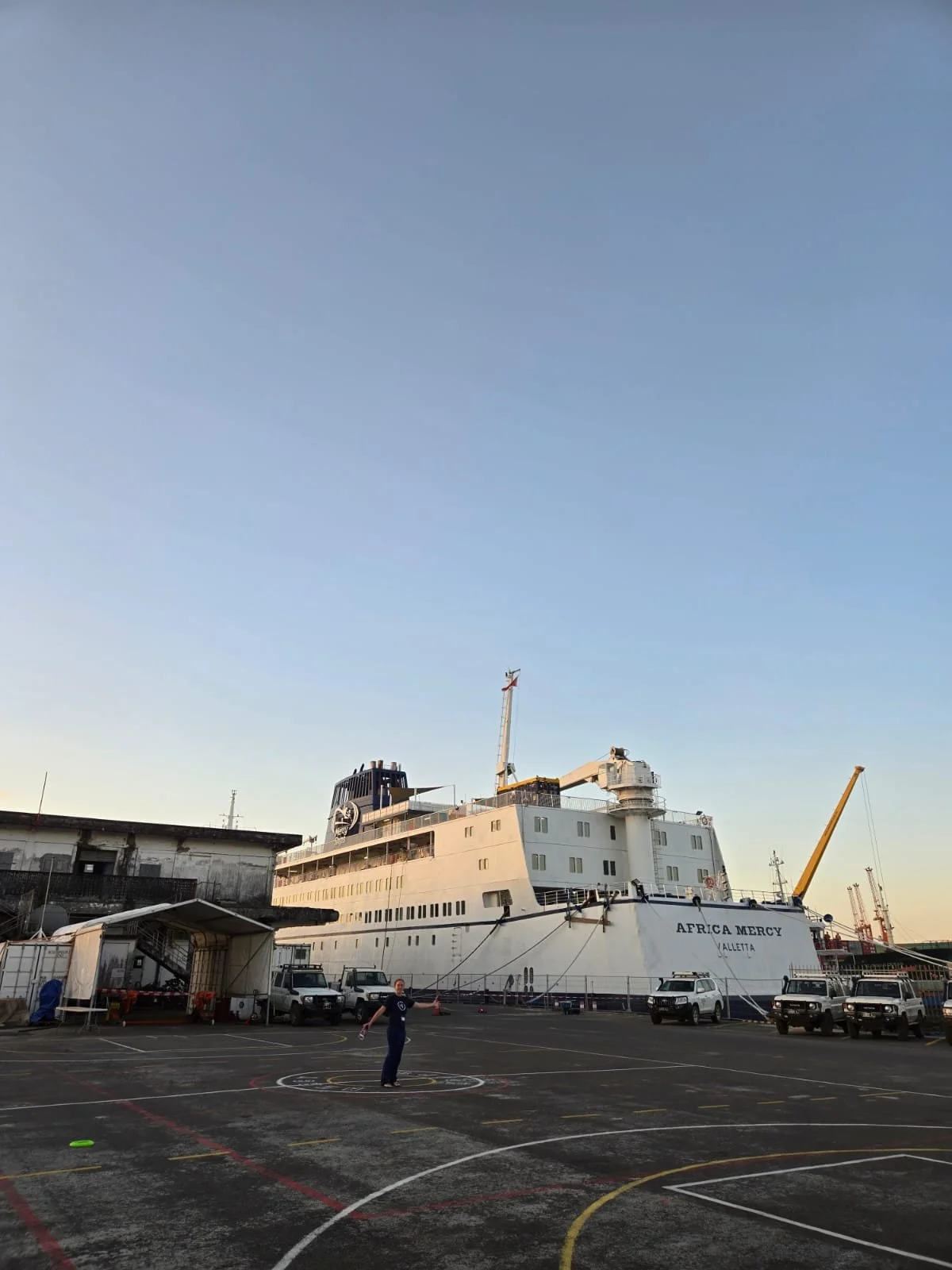
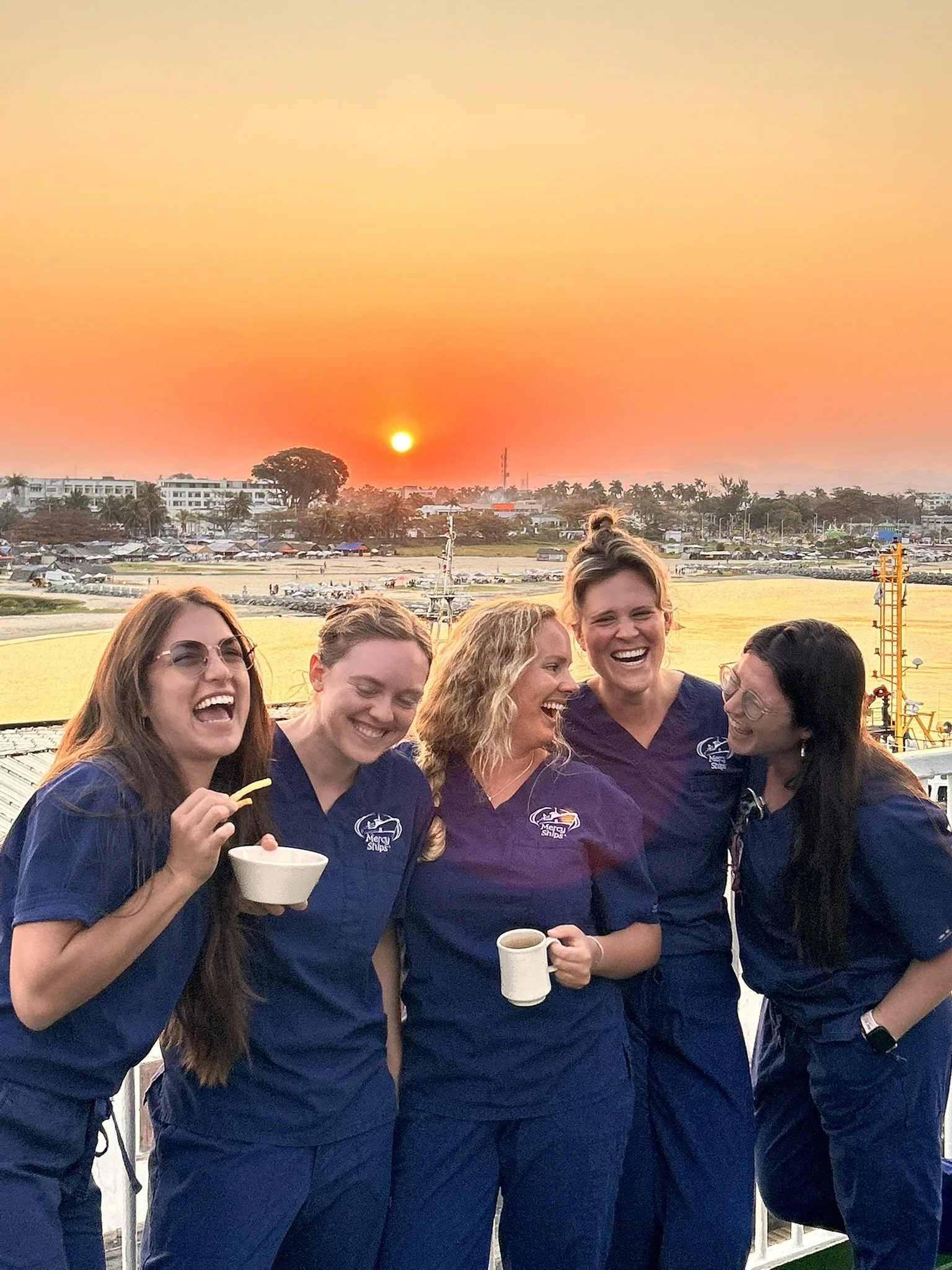
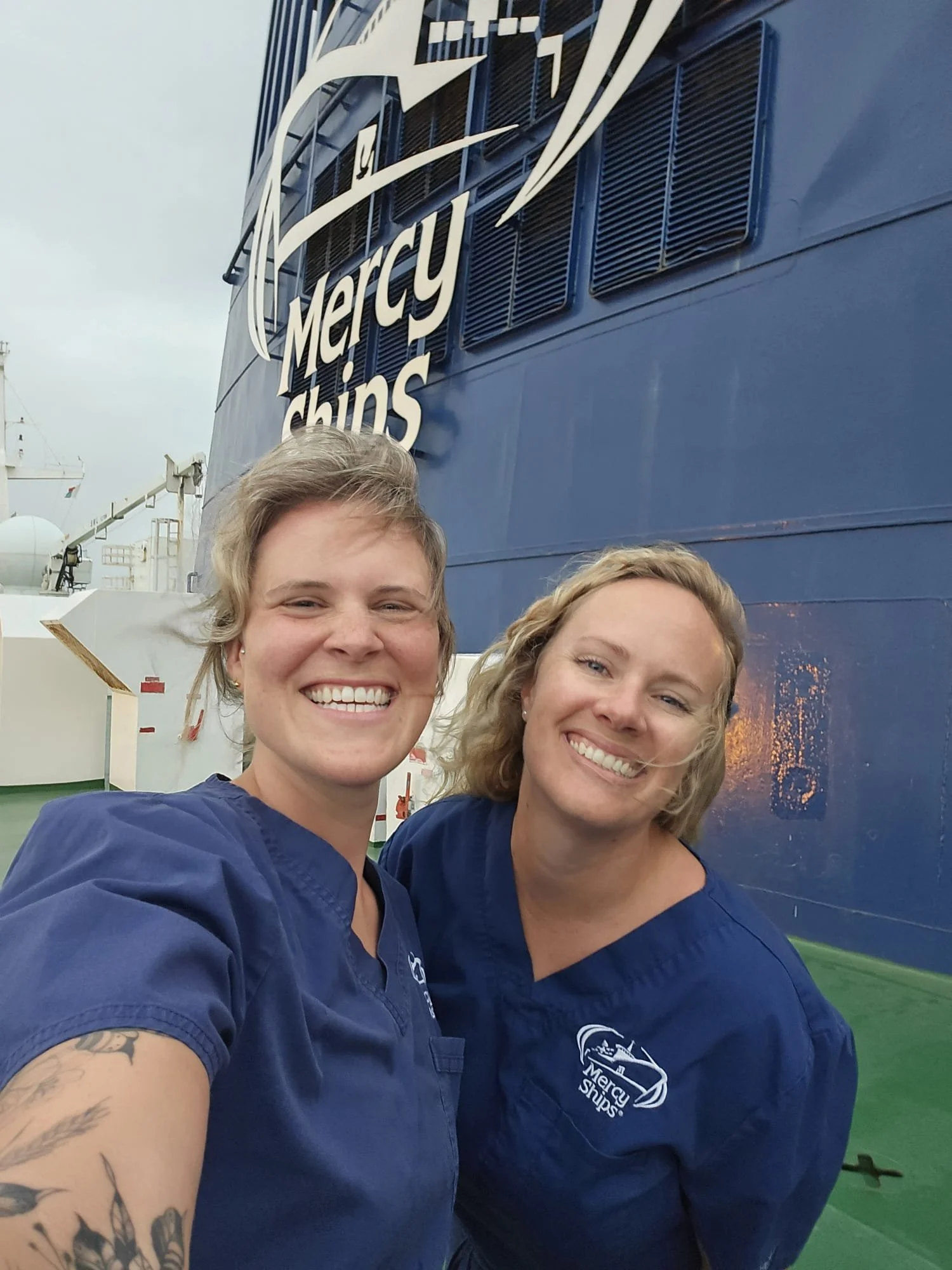

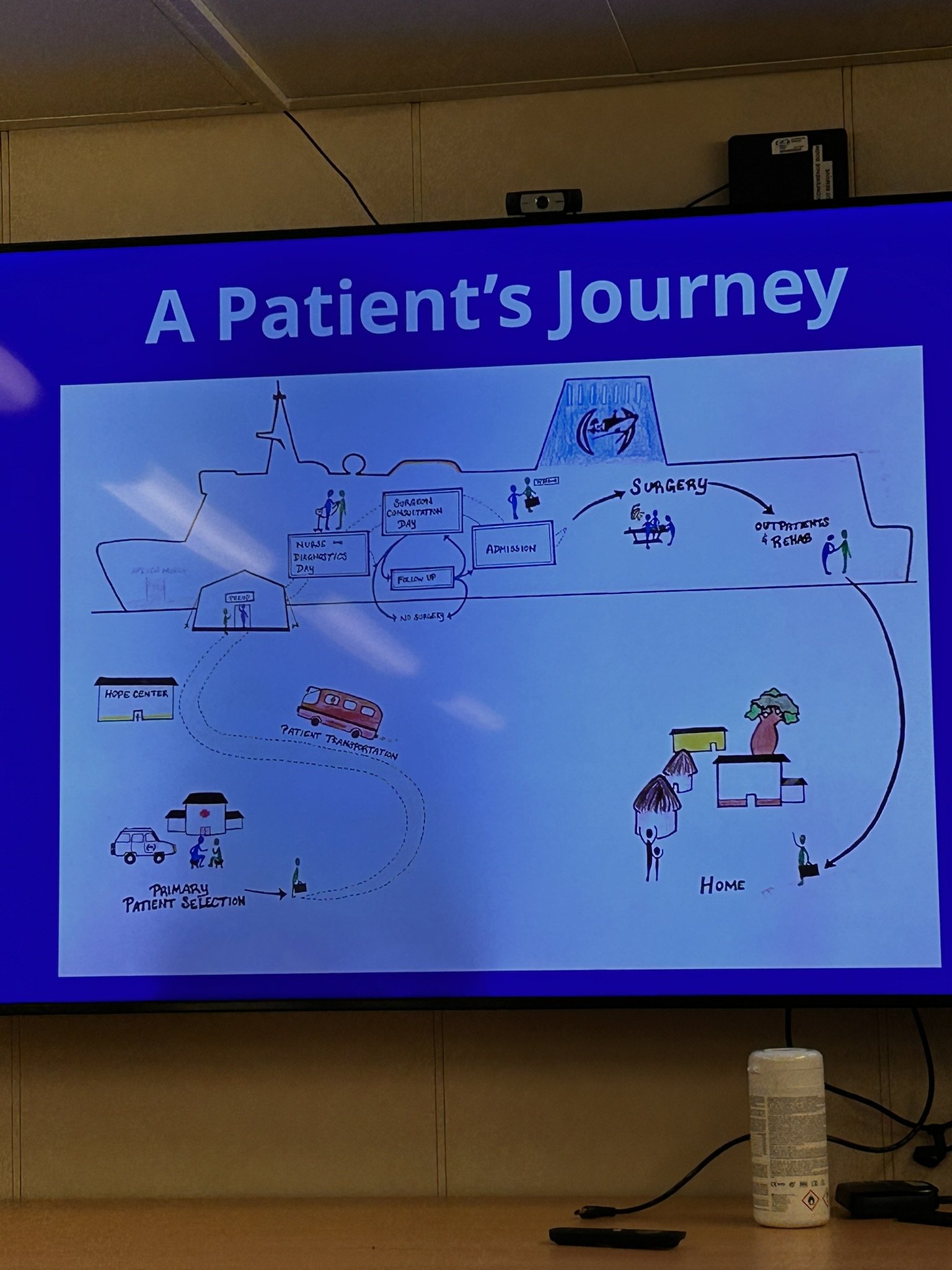
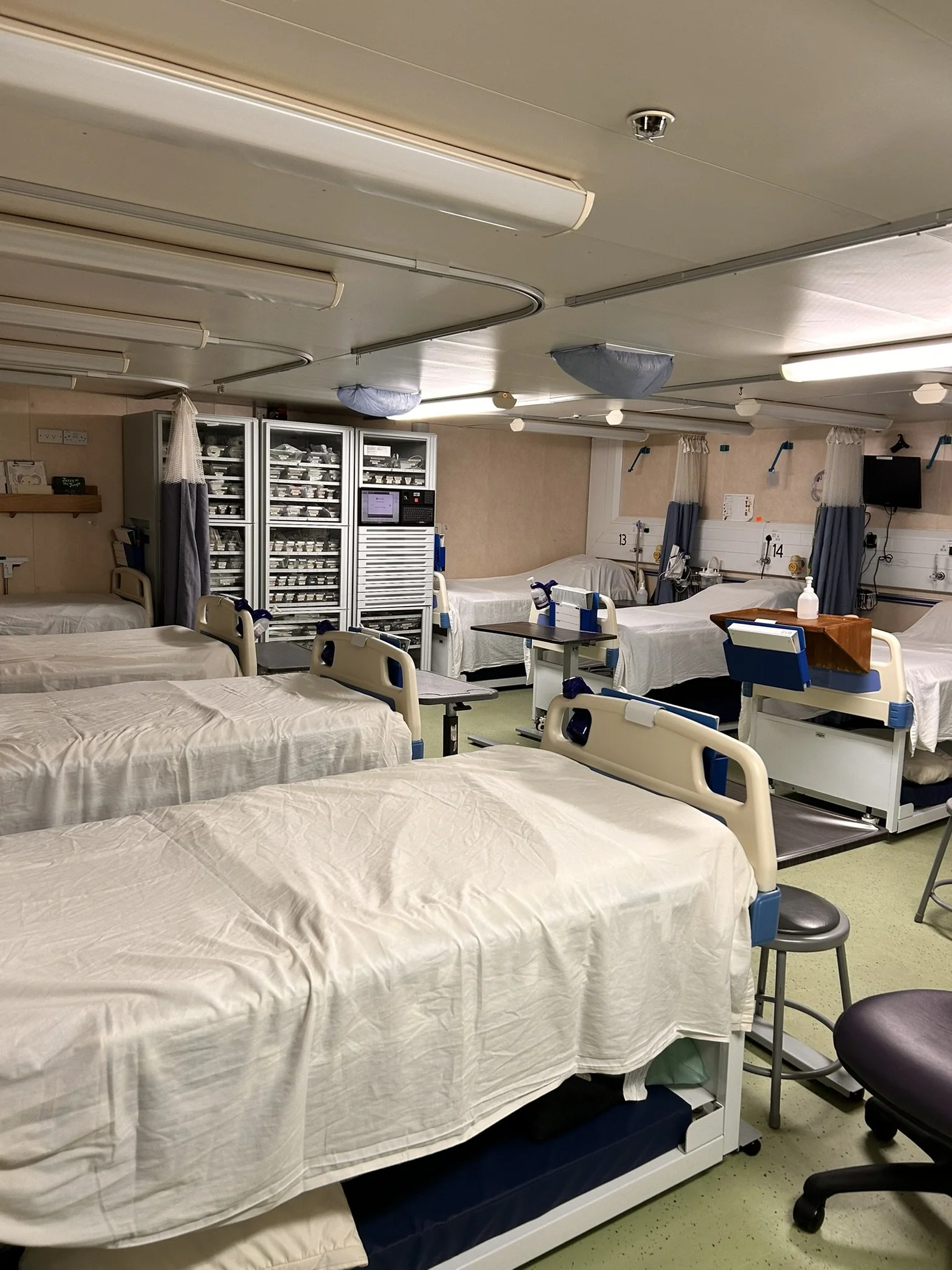
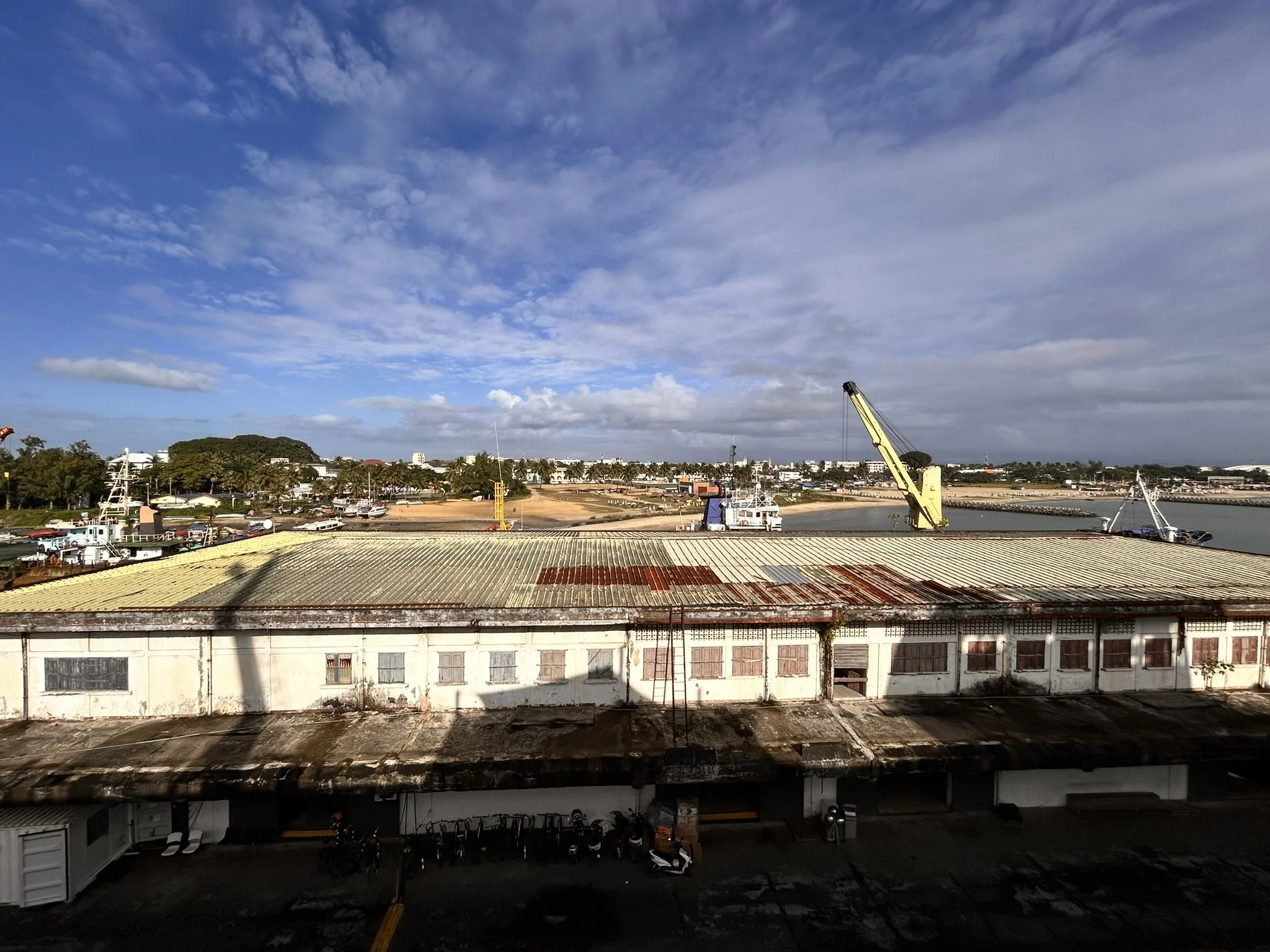
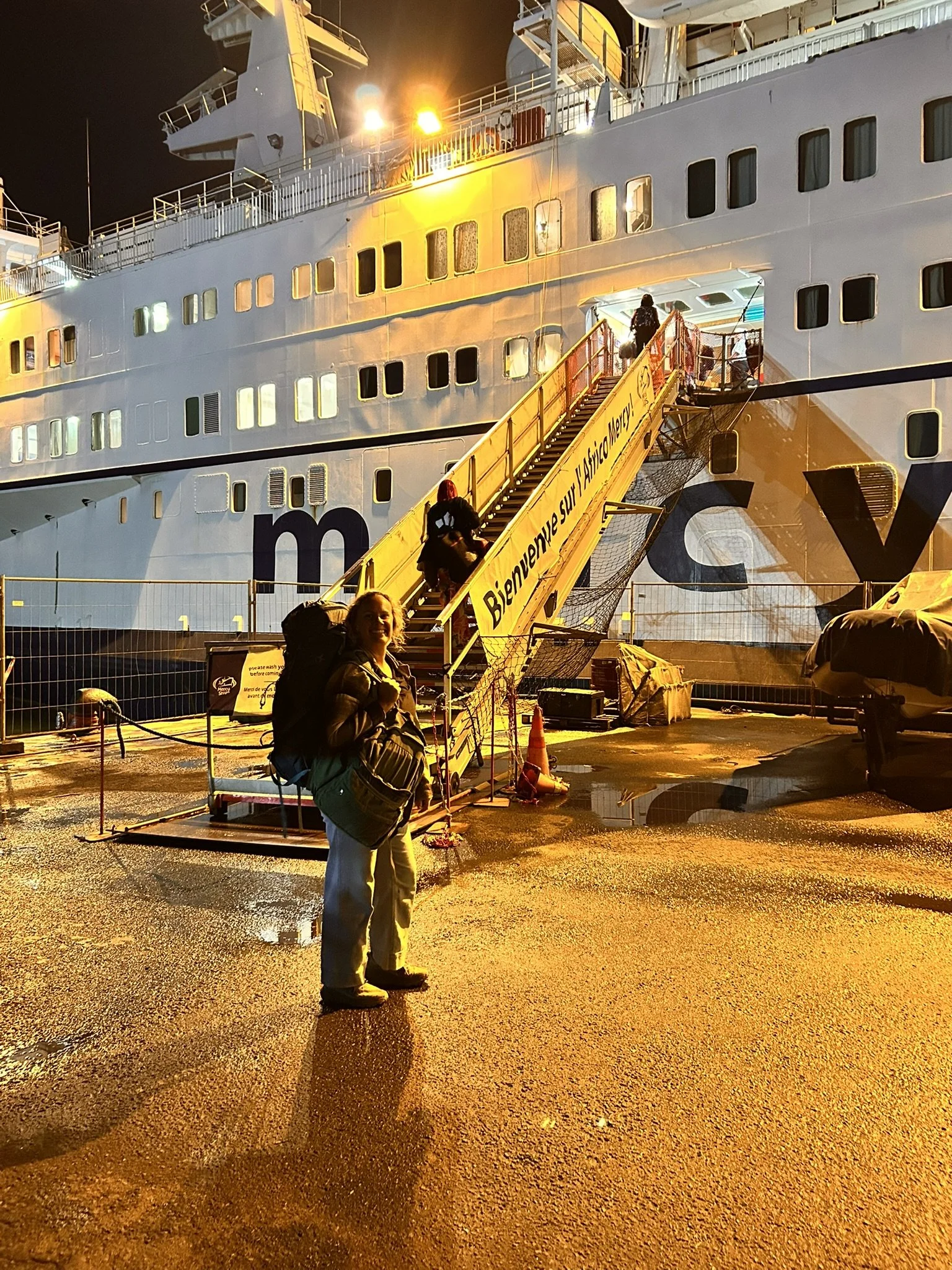
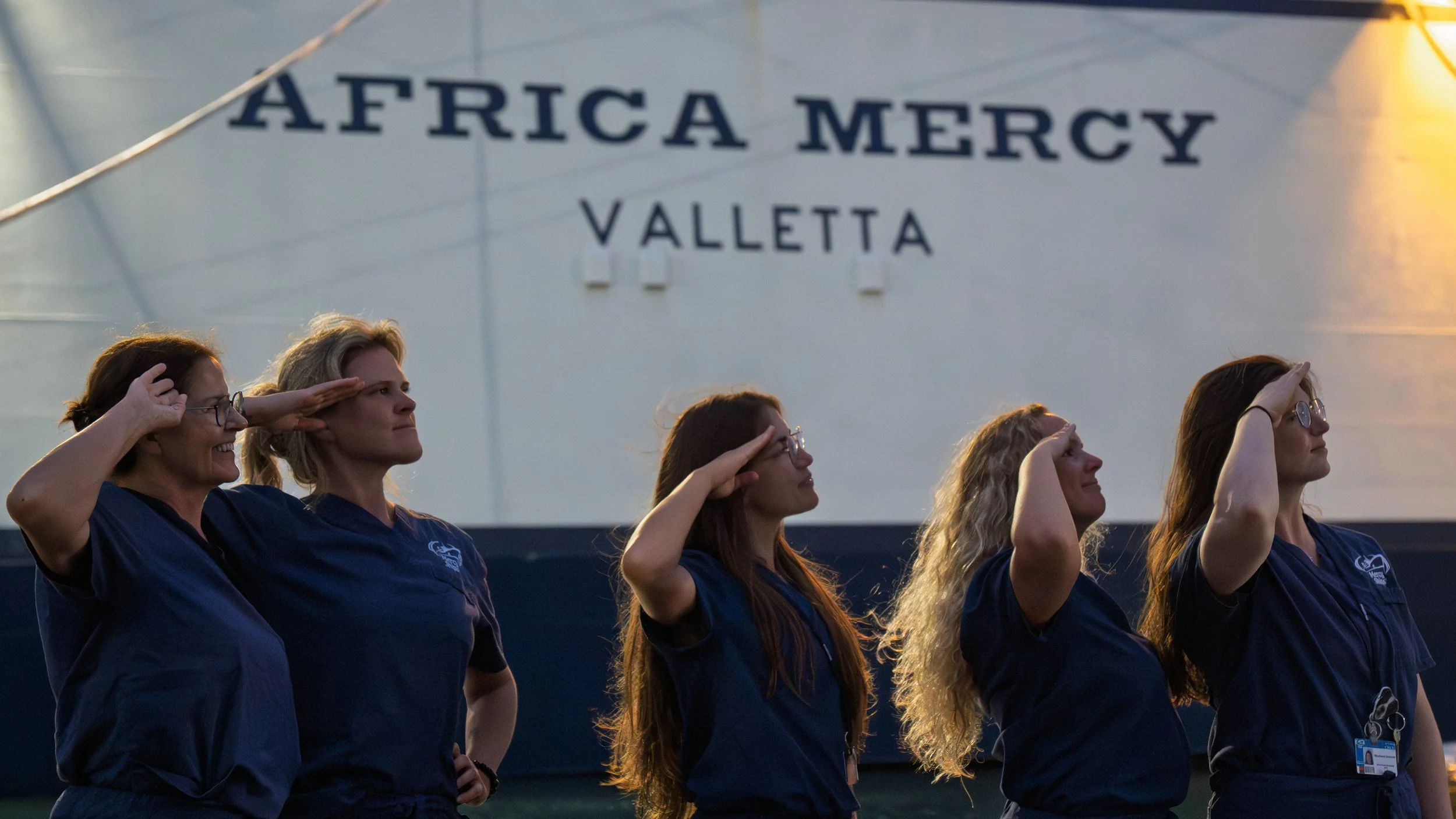
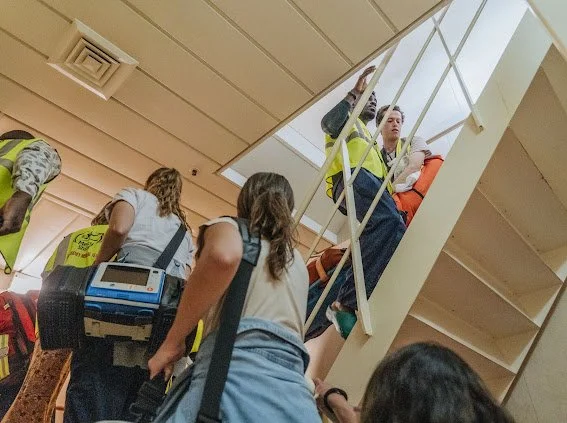
The Wards
Inside the Hospital on the Africa Mercy
Our hospital has five wards, each with its own specialty:
Ward A – Adult general surgery: think thyroid removals, lipoma removals, and hernia repairs.
Ward B – Orthopedic surgery: bow legs, club foot, and other bone-related corrections.
Ward C – Pediatric general surgery: hernia and hydrocele repairs for the little ones.
Ward D – Pediatric maxillofacial surgery: tumor removals, cleft lip and palate repairs.
Ward E – Isolation: where we care for patients who develop influenza, COVID, scabies, or other contagious illnesses while onboard.
There’s also a tiny 2-bed ICU, which so far has stayed blissfully empty—our surgeries are standard and elective, and we’d like to keep it that way. I’m based in Ward A but have “floated” to Wards D and E, which means I’m now unofficially a pediatric nurse.
Many of the patients we see have been outcast by their villages because of their appearance or physical differences. Some babies born with cleft lips have even been abandoned in the jungle, left to die. Through our work, we help families understand that these conditions are treatable medical issues, not curses or signs of possession. By providing surgeries and education, we can slowly shift cultural perspectives and give these men, women, and children a chance at a dignified, healthy life.
“Marche Marche!”
Twice a day, morning and evening, we gather all our patients and head into the hospital hallway for marche marche—a joyful, music-filled mini-parade. We crank up Malagasy tunes, sing, and dance together as one big family. Older patients push pediatric patients in wheelchairs, fresh post-op faces start breaking into smiles, and everyone gets their blood pumping and spirits lifted. It’s pure magic, and I’m already plotting how to bring marche marche back to the U.S.
Our Lovely Day Crew
Mercy Ships hires local Malagasy individuals to serve as our translators on the wards, in outpatients, during surgery, and at the HOPE Center. They are fluent not only in Malagasy but also in French and English, making them an indispensable and vital part of our team here. Their deep understanding of local languages and cultures ensures communication flows smoothly and effectively. Without their dedicated expertise and support, none of these critical systems in place would be able to function properly. We truly rely on their invaluable skills when it comes to providing compassionate, cross-cultural care.
The Infamous Mana Smoothie
One of the more… memorable parts of ward life is introducing patients to their “favorite” drink—a thick, peanut-buttery, protein-packed smoothie called mana. It’s designed to help our malnourished pediatric patients regain strength. Some kids love it, some hate it. As a rite of passage, I had my own shot of mana to officially join the Mercy Ships Ward Nurse club. Verdict: not bad!
Sunshine on Deck 7
Since the hospital is down on Deck 3 and the ship has no elevators, getting patients outside is a workout in itself. We carry those who can’t walk—casts, crutches, and all—up to Deck 7 for fresh air and ocean views. There, they can ride wagons and scooters, play card games or dominoes (a favorite among the gentlemen), or simply soak in the sea breeze.
Continuous Learning
Monday mornings are for education sessions ahead of new patient arrivals. Depending on the surgeons coming aboard, we may be caring for thyroid patients having goiters removed, babies with cleft palates, or children with various orthopedic problems. It’s an ongoing crash course in specialized care—challenging, fascinating, and essential for keeping our skills sharp.
